Rijeka Gastronomic Ports: New Brand to Create a Unique Gourmet Story
February 3, 2022 - The new gastronomic brand aims to bring together local caterers and create a unique gourmet story rooted in Rijeka’s port-city image
The Rijeka Tourist Board and the company Abisal/Gastronaut Club have announced a new project that’s sure to pique the interest of all gourmet enthusiasts.
Rijeka Gastronomic Ports is a project that aims to bring together local catering facilities and create a unique story with immense marketing potential: a gastronomic brand that goes hand in hand with Rijeka’s port city image. The project would also offer support to caterers and improve the overall quality and brand recognition of Rijeka’s gastronomic offer.
The word port/harbour has positive connotations in itself and invokes a sense of safety: just think of the expression ‘a safe harbour’. A port is where we seek refuge from bad weather; it's a place that promises nourishment and comfort, a place we leave feeling refreshed, feeling rested.
Such feelings invoked by ports can easily be applied to other aspects of life in Rijeka; many catering facilities in the city already resemble little proverbial ports. If we think of restaurants in this way, as a caterer, what kind of port would you like your restaurant to be? Or, as a guest, what would be your gastronomic port of choice?
Perhaps a sentimental one - a family port, a romantic port? On the other hand, some might prefer to think of ports as places to conduct business and would thus want for this to be reflected in their establishment.
The possibilities are endless; as a start, nine categories have been established in the initial phase of the project. Caterers are welcome to submit additional themes for consideration, as the project owners are willing to expand the list with categories they deem to have marketing potential, i.e. they reflect specific features or services that could potentially be interesting to citizens of Rijeka and their guests.
Here’s the initial list of categories, together with a few prerequisites that catering facilities need to meet if they’re looking to participate:
Business port - restaurants in this category should have the best available Wi-Fi, widely spaced tables, a separate area for meetings, several modes of payment available, and ideally reserved parking for guests if the establishment is located outside the city centre
Romantic port - restaurants that have an appropriate decor and ambiance, and feature dishes made of ingredients known for properties related to romance - chocolate, truffles, oysters…
Family port - restaurants need to be equipped with a children’s play area and a changing station for babies, offer children’s menus and provide games or colouring books to keep kids occupied at the table
Port for wine connoisseurs - the restaurant’s wine list must contain a minimum of 30 wines, grouped by variety and including detailed descriptions; staff should be trained in wine pairing, serving and decanting
Beer port - the restaurant’s beer list must contain a minimum of 20 beers; staff should be trained in beer and food pairing
Port of local produce - restaurants should be sourcing a minimum of 70% of ingredients from local producers or grow their own produce, and provide documentation to support the claim
Vegan port - the menu must feature at least 7 vegan-friendly dishes based on legumes, whole grains, beans, nuts, fruit, vegetables, and seeds (not containing dairy, eggs, honey, gelatin, etc.)
Fishing port - caterers that either run a fishing business or source their fish directly from local fishermen
Ports of individuality - a somewhat broad category to accommodate all caterers who bring something specific or unique to the table that is not defined by any of the other categories. This includes restaurants specialising in international cuisines, provided they offer at least 7 dishes authentic to the cuisine in question, have the menu translated into the language of the country of origin, and at least one person on the staff who speaks the said language.
Caterers can apply before February 15, 2022 by filling in this form (maximum of three categories). Those caterers who have yet to ensure their services match the prerequisites of a certain port category can request a deadline extension of three weeks, provided they send the request before February 15, 2022.
The Rijeka Gastronomic Ports project was devised by Karin Mimica, a native of Rijeka and the author of the two longest-lasting quality brands in Croatian hospitality - Restaurant Croatica and Gastronaut. She has also organised several dozen conferences and projects related to positioning and branding of gastronomy in tourism.
The project is co-financed by Rijeka Tourist Board, who plan to organise a number of educational workshops for caterers in collaboration with the Gastronaut club.
Taste the Mediterranean: Masterclass with French Chocolatier Claude Krajner
October 8, 2021 - What better way to start the day than with a taste of handmade chocolates? Thankfully, the Taste the Mediterranean Food Festival brings one of the best chocolatiers of France - Maitre artisan chocolatier Claude Krajner to Split. A look into his masterclass with 15 aspiring culinary students from Aspira University College.
The day was sweeter than usual in the building of Aspira University College where the brilliant creator of Le temps d'un chocolat in Marseilles, France, chocolatier Claude Krajner, conducted a special cooking workshop with students from Aspira University College. The class was eagerly attended by at least 15 culinary students and was organised by TTM Festival in cooperation with Aspira. Since Claude is French with Croatian descent, the workshop was held in French and Croatian.
 Photography by: Princess Prkić
Photography by: Princess Prkić
Claude Krajner received the title Maitre Artisan Chocolatier in 2015 and is recognisably one of the best chocolatiers in France. He is also a member of the prestigious Academie Nationale de Cuisine and Disciples Escoffier International. His passion for artisan chocolates began at an early age so he naturally pursued the culinary world and built his experience from working in the best restaurants in Paris and later on proceeded to the Canary Islands where he worked at Les Moulins de Paris in Lanzarote as a pastry chef. Chef Claude is also a permanent lecturer at Villa des Chefs, a highly-regarded culinary school in Aix en Provence where short courses and masterclasses are regularly offered by famous chefs and confectioners. The famous chocolatier also creates personalised chocolate products for big companies including Swarovsky, Palais des Thes, and Kartell. Since 2010, Claude Krajner has served as Vice-president of Chocolatiers et Biscuitiers de France - French masters in the art of chocolate and dry cookie making.
 Photography by: Princess Prkić
Photography by: Princess Prkić
The masterclass was not just a theoretical lecture, but the culinary students of Aspira were also hands-on in assisting the guest chef. At 4 PM today, Tonči Drije, the head of gastronomy and practical workshops at Aspira University College will also take part in "Learn and Make Your Dreams Come True", a panel event by TTM Festival, in Briig Boutique Hotel. This event was organised by Mediterranean Women Chefs, an international group dedicated to improving the role of women in gastronomy. Other panelists include pastry chef Tea Mamut of Patisserie O'š Kolač, Split, chef Deni Srdoč of restaurant Nebo Hilton, head of Raise the Bar Academy Kruno Rozič, and chef Nikolina Putica.
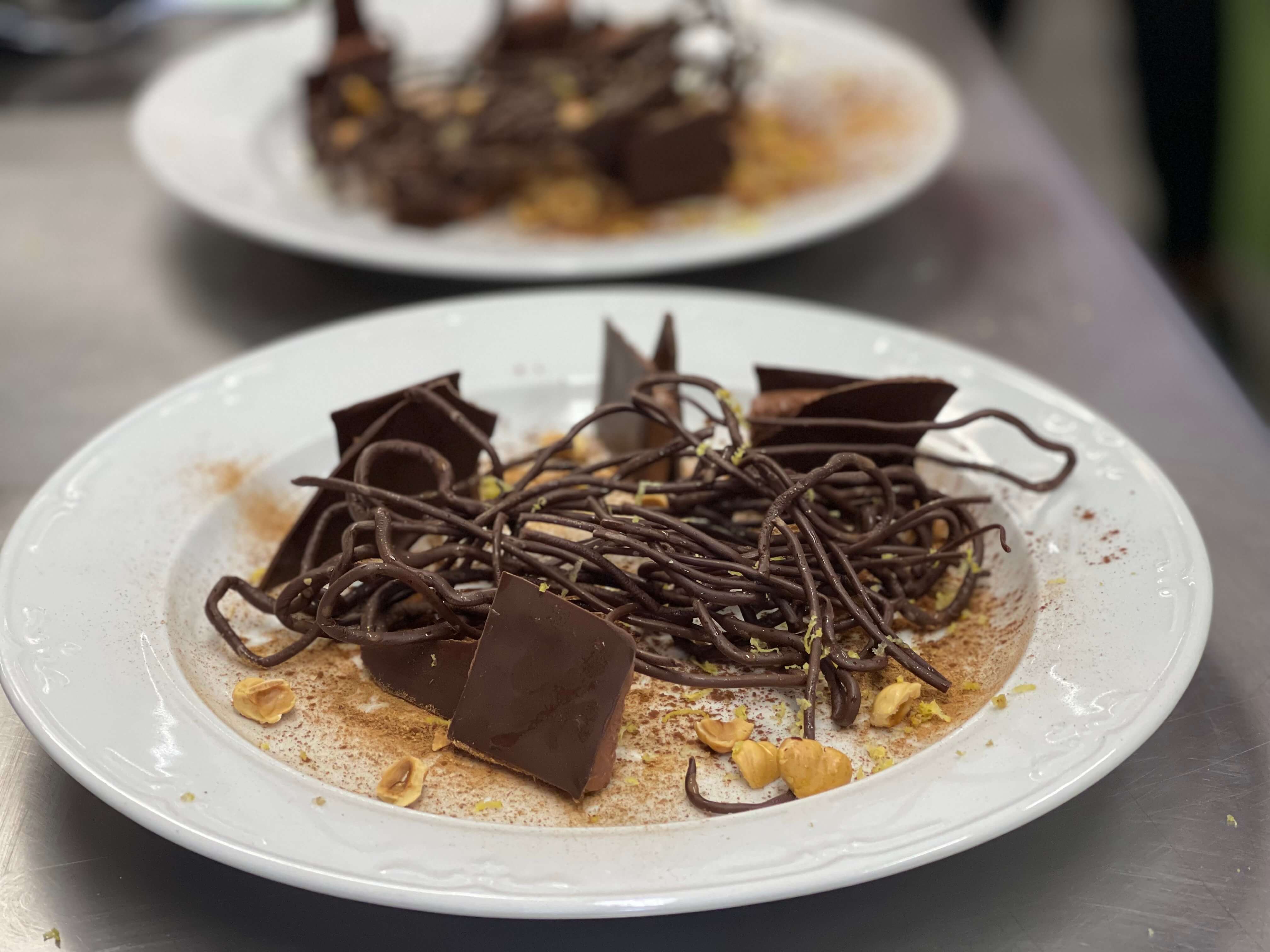 Photography by: Princess Prkić
Photography by: Princess Prkić
As part of the Taste the Mediterranean festival, French chocolatier Claude Krajner will also be a guest chef in an exclusive dinner hosted by chef Stjepan Vukadin of restaurant Zrno Soli which boasts a Michelin plate and 3 Gault & Millau toques. Other guest chefs include Chef Anastasios Paraskevaidis of restaurant Hotel Mount Athos in Ierissos, Greece, and Chef Jure Tomič of restaurant Debeluh in Brežice, Slovenia.
To learn more about the festival's special events, follow TTM festival's Instagram page.
For more on lifestyle, follow TCN's dedicated page.
For more about Croatia, CLICK HERE.
Eat Your Way Through Croatia: The Croatia Michelin Guide for Foodies 2021
July 01, 2021 - Ranked as the 4th most underrated foodie destination in the world, Croatia now boasts 7 Michelin stars, 10 Bib Gourmands, and 51 Michelin Plates restaurants. This is your ultimate food guide for an unforgettable gourmet Croatia experience! The Croatia Michelin Guide for foodies this year.
Originally a guide for French motorists started by brothers Edouard and Andre Michelin back in the early1900s, The Michelin Guide is now the Oscars of the culinary world and the holy creed for ardent food lovers. Although the star system is the most revered and famous among others, the Michelin stars are not the only way the Michelin Guide recognizes restaurants - they also give out the Michelin Bib Gourmand and The Plate Michelin awards to those deserving to be distinguished in the culinary world!
THE MICHELIN GUIDE CROATIA 2021
Find your way to the best restaurants and konobas in Croatia with just one click!
1 Michelin Star - "A very good restaurant; worth a stop!"
2 Michelin Stars - "Excellent cooking; worth a detour!"
3 Michelin Stars - "Exceptional cuisine; worth a special journey!"
Other Awards:
Michelin Bib Gourmand - "Good quality and good value cooking"
The Plate Michelin - "Good cooking: Fresh ingredients and carefully prepared"
SPLIT-DALMATIA
The Plate Michelin
Zoi - Split, Mediterranean Cuisine
Zrno Soli - Split, Seafood / Mediterranean Cuisine
Dvor - Split, Mediterranean Cuisine
Kadena - Split, International Cuisine
Konoba TRS - Trogir, Meditteranean Cuisine
Jeny - Tucepi, Modern Cuisine
Michelin Bib Gourmand
Konoba Škoj - Isola di Solta, Mediterranean Cuisine
ŠIBENIK-KNIN
1 Michelin Star
Pelegrini - Šibenik, Modern Cuisine
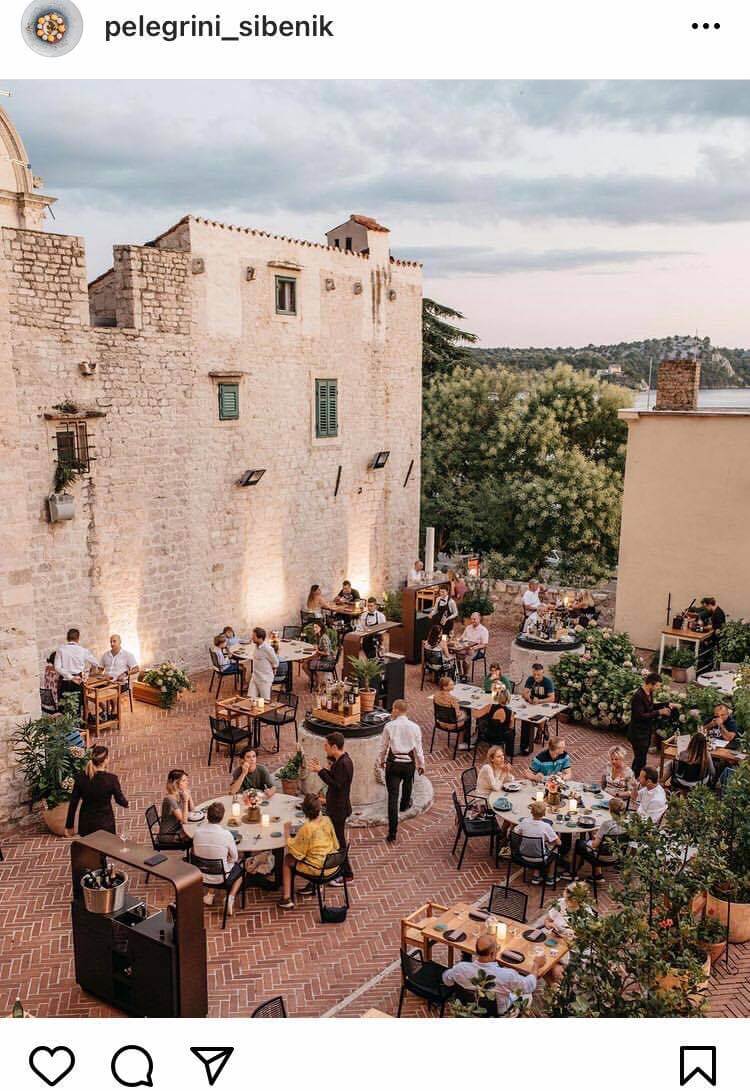
Photo credit: Instagram: pelegrini_sibenik
The Michelin Guide describes chef Rudolf Štefan's menu as perfect and a result of long, painstaking research and hard work. Pelegrini highlights the usage of local ingredients such as oysters, sea snails, sea urchins, mussels, lamb, and veal.
MUST TRY!
- Carrot mussels and sausage
- Chicken tingul
- Fig and ricotta
The Plate Michelin
Konoba Tri Piruna - Vodice, Modern Cuisine/Contemporary
Konoba Boba - Murter, Modern Cuisine
Michelin Bib Gourmand
Konoba Vinko - Konjevrate, Country Cooking
ZADAR
The Plate Michelin
Fośa - Zadar, Seafood and Classic Cuisine
Kaštel - Zadar, Meditteranean Cuisine, Contemporary
DUBROVNIK-NERETVA
1 Michelin Star
Restaurant 360 - Dubrovnik, Modern Cuisine
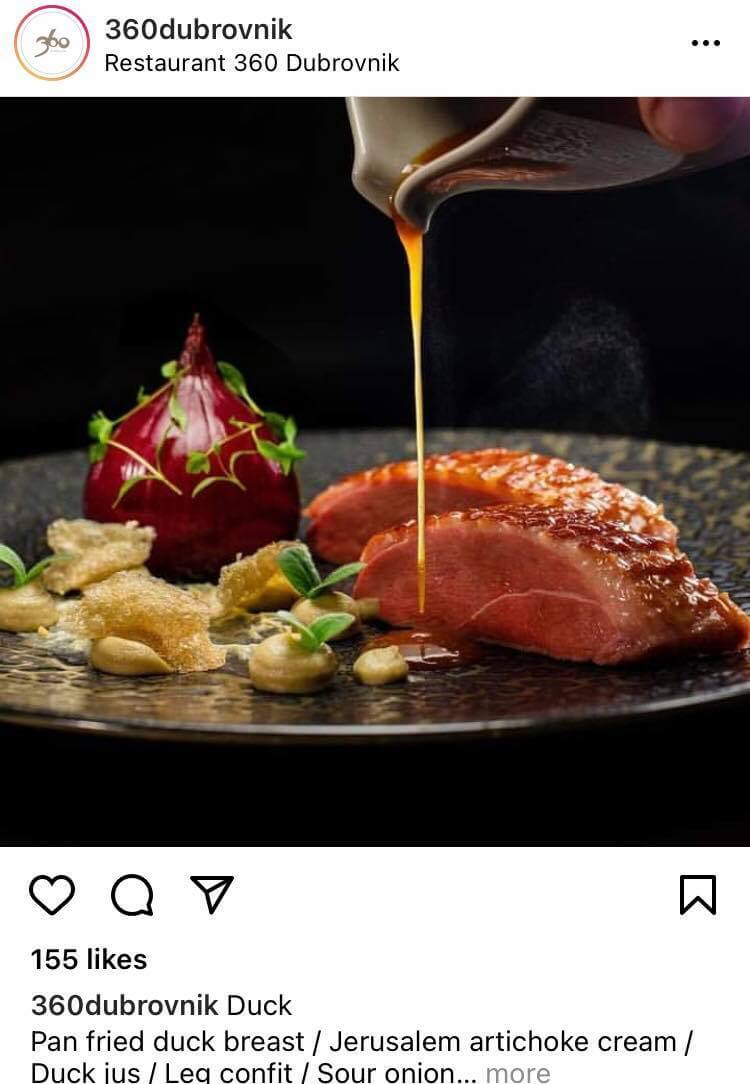 Photo credit: Instagram: 360dubrovnik
Photo credit: Instagram: 360dubrovnik
A restaurant with a perfect view of the picturesque and historical city of Dubrovnik, the restaurant is equipped with real professionalism and young and dynamic staff. The menu is elaborately prepared and beautifully presented, including the wines. The Michelin Guide describes it as the best choice for an enchanting and gourmet evening in this romantic city.
MUST TRY!
- Two textures of scallops and turnip: turnip creamy base with slightly seared scallops, sour turnip disc, and marinated scallops carpaccio in lime juice, crunchy quinoa chips, and thick onion soup
- Pan-seared duck breast, soy sauce glaze, Jerusalem artichoke purée, sour onion filled with duck confit, croutons, and anchovies foam
- Milky chocolate velouté base, Kadaif filled with cooked pear in timut pepper and vanilla, Tonka cream, homemade vanilla, and oat ice cream
LD Restaurant - Korčula Island, Mediterranean / Modern Cuisine
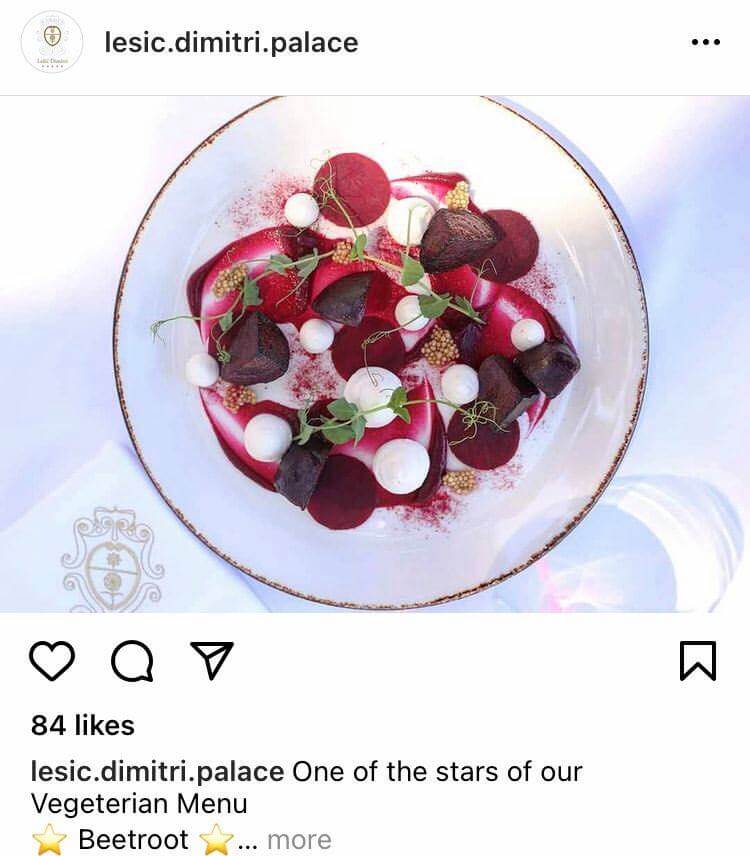
Photo credit: Instagram: lesic.dimitri.palace
This restaurant offers superb Mediterranean cuisine showcasing local products, especially olive oil, excellent fish selection, and exotic ingredients. The outdoor area is perfect for al fresco dining and has the perfect view of the sea and the islands.
MUST TRY!
- Foie Gras (Apple, grapes, brioche crumbs, cherries)
- Prawn gyoza (Mousseline sauce, chili, daikon, sesame)
- Chocolate Crocante
The Plate Michelin
Vapor - Dubrovnik, Modern Cuisine
Nautika - Dubrovnik, Classic Cuisine
Above 5 - Dubrovnik, Creative
Stara Loza - Dubrovnik, Mediterranean Cuisine
Proto Fish - Dubrovnik, Seafood
Dubrovnik - Dubrovnik, Mediterranean Cuisine
Bistro Tavulin - Dubrovnik, Traditional cuisine
Pjerin - Dubrovnik, Mediterranean Cuisine
Bugenvila - Cavtat, Classic Cuisine
Filippi - Korčula Island, Mediterranean Cuisine
Michelin Bib Gourmand
Konoba Mate - Korčula Island, Country Cooking
ISTRIA
1 Michelin Star
Monte - Rovinj, Creative

Photo credit: Instagram: monte_rovinj
The Michelin Guide describes Chef Danijel Dekić's cuisine as highly creative, almost theatrical with contemporary and exciting techniques. Monte is located in the heart of Rovinj, with a modern and trendy vibe. Definitely worth a stop!
MUST TRY!
- Omega 3- three preparations of Northern Adriatic fish
- Suckling pig, lentils, yellow cabbage, pork rind
- Apple & Rose- rose ice cream, apple mousse, candied rose petals
The Plate Michelin
Alla Beccaccia - Valbandon, Traditional/Classic Cuisine
Meneghetti - Bale, Classic Cuisine
La Puntulina - Rovinj, Mediterranean/Regional Cuisine
Zigante - Livade, Traditional Cuisine
SV. Nikola - Porec, Classic Cuisine
Konoba Čok - Novigrad, Seafood
Marina - Novigrad, Creative
Damir & Ornella - Novigrad, Seafood
Konoba Morgan - Brtonigla, Traditional Cuisine
San Rocco - Brtonigla, Contemporary/Modern Cuisine
Badi - Lovrečica, Meditteranean Cuisine
Konoba Buščina - Umag, Traditional Cuisine
Pergola - Zambratija, Seafood
Michelin Bib Gourmand
Batelina - Banjole, Seafood
PRIMORJE-GORSKI KOTAR
1 Michelin Star
Draga Di Lovrana - Lovran, Modern Cuisine
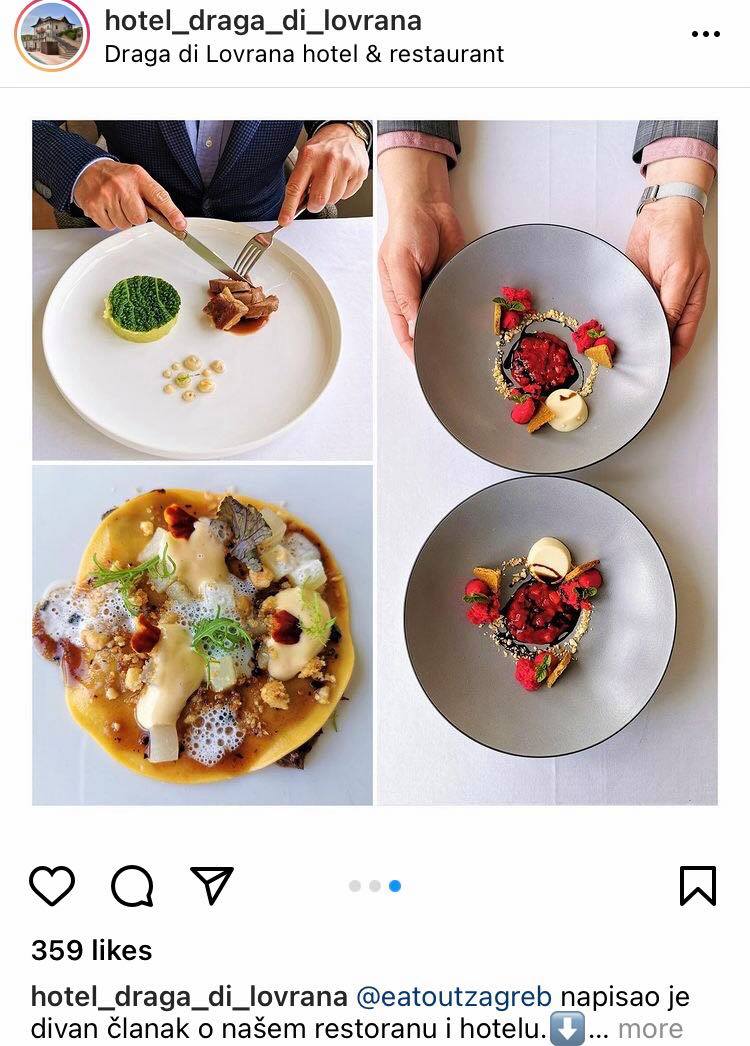
Photo credit: Instagram: hotel_draga_di_lovrana
The Michelin Guide commended the restaurant's promotion of local produce and its dishes that are creative, modern with Mediterranean influences and occasional French twist. The restaurant has an impressive wine list that perfectly complements the restaurant's daily menu. Since 2021, this modern kitchen is being run by chef Zdravko Tomšić.
MUST TRY!
- Rolls of deer ramsteak, mousse pastrnjaka, carrot, pomegranate
- Pork belly, Roman gnocchi, beet chutney / apple
- Whiskey biscuits, baked pear cream, mandrine sauce
- Kvarnerski ceviche, orange emulsion, black basket
The Plate Michelin
Villa Ariston - Opatija, Classic / Modern Cuisine
Navis - Opatija, Contemporary / Mediterranean Cuisine
ZAGREB
1 Michelin Star
Noel - Zagreb, Modern Cuisine
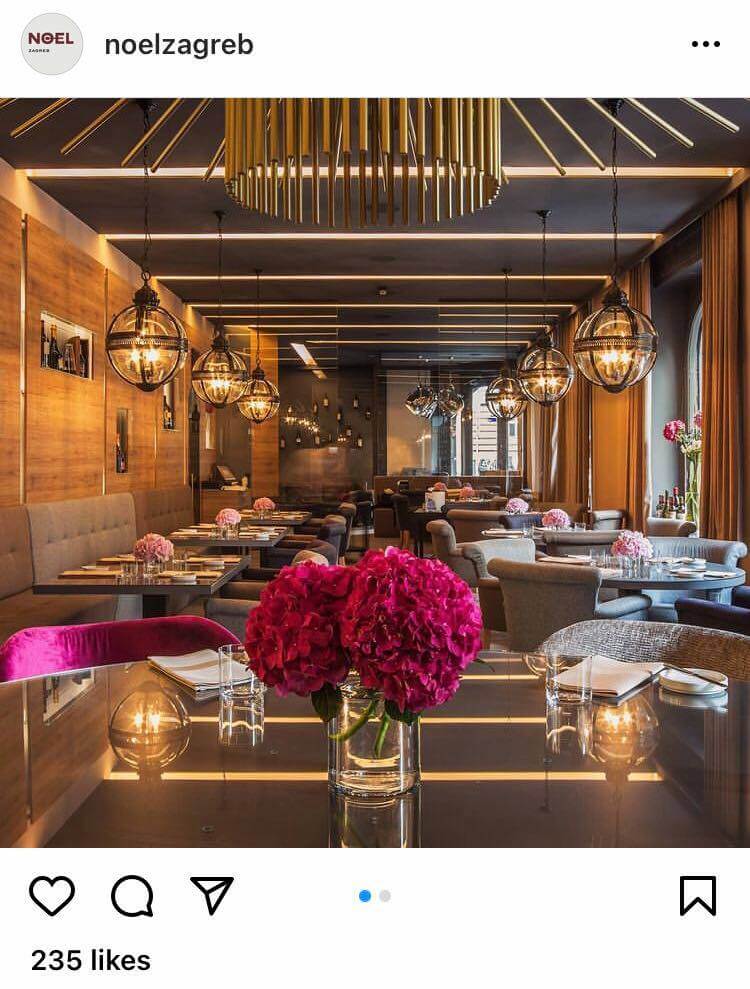
Photo credit: Instagram: noelzagreb
The restaurant serves contemporary, modern, and imaginative dishes with carefully selected Croatian, French and Italian wines. This trendy and hip restaurant is owned by owner-chef Goran Kočiś and his business partner and sommelier, Ivan Jug.
MUST TRY!
- Zagorski Štrukli with Istrian truffles
- Wild fish, young beans, yuzu, beurre blanc
- Apple, rosemary, passion fruit
The Plate Michelin
Tekka - Zagreb, Japanese/Asian, Takeaway
Zinfandel's - Zagreb, Modern Cuisine
Le Bistro Esplanade - Zagreb, French
Beštija - Zagreb, Market Cuisine / Contemporary
Apetit - Zagreb, Mediterranean Cuisine
Takenoko - Zagreb, Japanese / Fusion, Takeaway
Boban - Zagreb, Traditional Cuisine
Pod Zidom - Zagreb, Market Cuisine
Dubravkin Put - Zagreb, Mediterranean Cuisine
ManO - Zagreb, Steakhouse / Modern Cuisine
Bistro Apetit by Marin Rendić - Zagreb, Mediterranean Cuisine
Mon Ami - Velika Gorica, Mediterranean Cuisine, Takeaway
Michelin Bib Gourmand
Agava - Zagreb, International
Tač - Zagreb, Traditional Cuisine
KRAPINA-ZAGORJE
Michelin Bib Gourmand
Vuglec Breg - Krapina, Regional Cuisine
LIKA-SENJ
1 Michelin Star
Boškinac - Novalja, Pag, Modern Cuisine
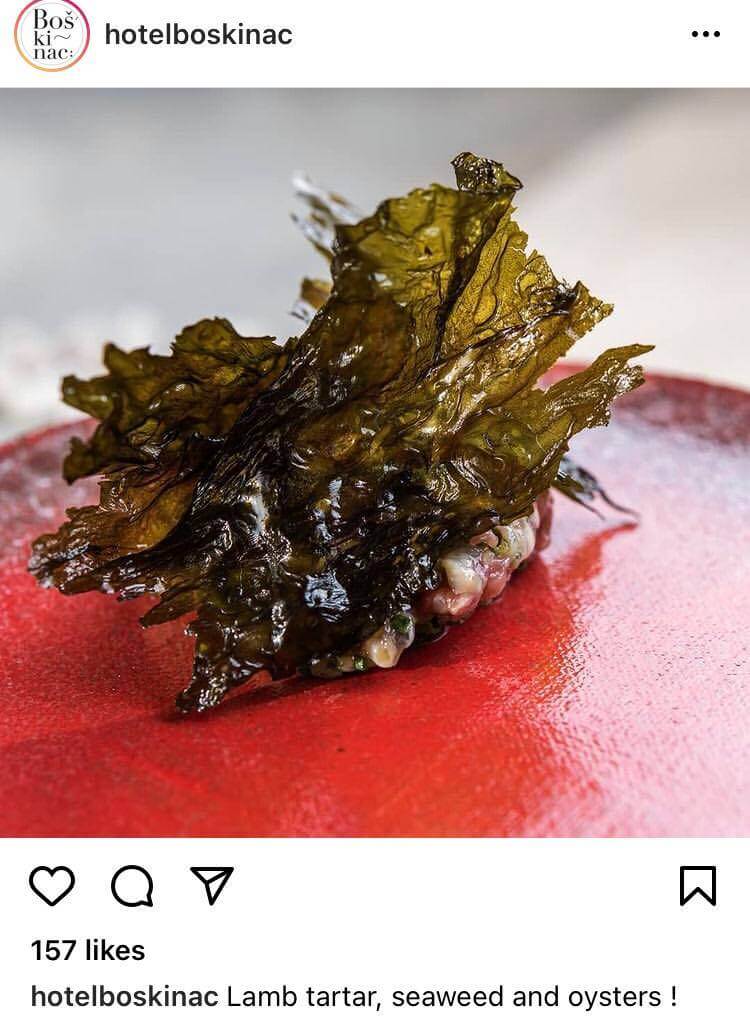
Photo credit: Instagram: hotelboskinac
Surrounded by greenery, Boškinac showcases Pag island's various delicacies in its menus such as olive oil, Pag cheese, lamb, fish, and wine. The restaurant is located in a property that is perfect for an idyllic and relaxing holiday in Croatia.
MUST TRY!
- Scampi, seaweed, basil and almond emulsion, planktons
- Pag lamb burned with pine needles powder, roasted lamb belly, peas, and mint cream, pickled carrots
- Beetroot cream, fermented lemon and yogurt cream, olive oil sponge cake cover, beetroot jelly, pickled carrot leaves
VARAŽDIN
The Plate Michelin
Bedem - Varaždin, Traditional Cuisine, Takeaway
Michelin Bib Gourmand
Zlatne Gorice - Varaždin Breg, Regional Cuisine
MEDIMURJE
The Plate Michelin
Mala Hiža - Mačkovec, Regional Cuisine
OSIJEK-BARANJA
The Plate Michelin
Waldinger - Osijek, Regional Cuisine
VUKOVAR-SYRMIA
Michelin Bib Gourmand
Dunav - Ilok, Country Cooking / Regional Cuisine
For more on travel in Croatia, follow TCN's dedicated page.
For more about Croatia, CLICK HERE.
International Cuisine In Zagreb: Pekinška Patka, international minimarket
September 20, 2020 - Continuing our series on Zagreb’s international food offer and the stories behind these cuisines and businesses. This time, international food market Pekinška Patka
My name is Josip and I'm Croatian by birth. We opened Pekinška Patka in 2013. There was a real lack of stores like this in Croatia. My partner Andrea and I were sick of working for other people. Andrea has been a vegetarian for a long time and she likes cooking. I like travelling and trying new foods, so we both had an interest in international foods. We're also both big music fans.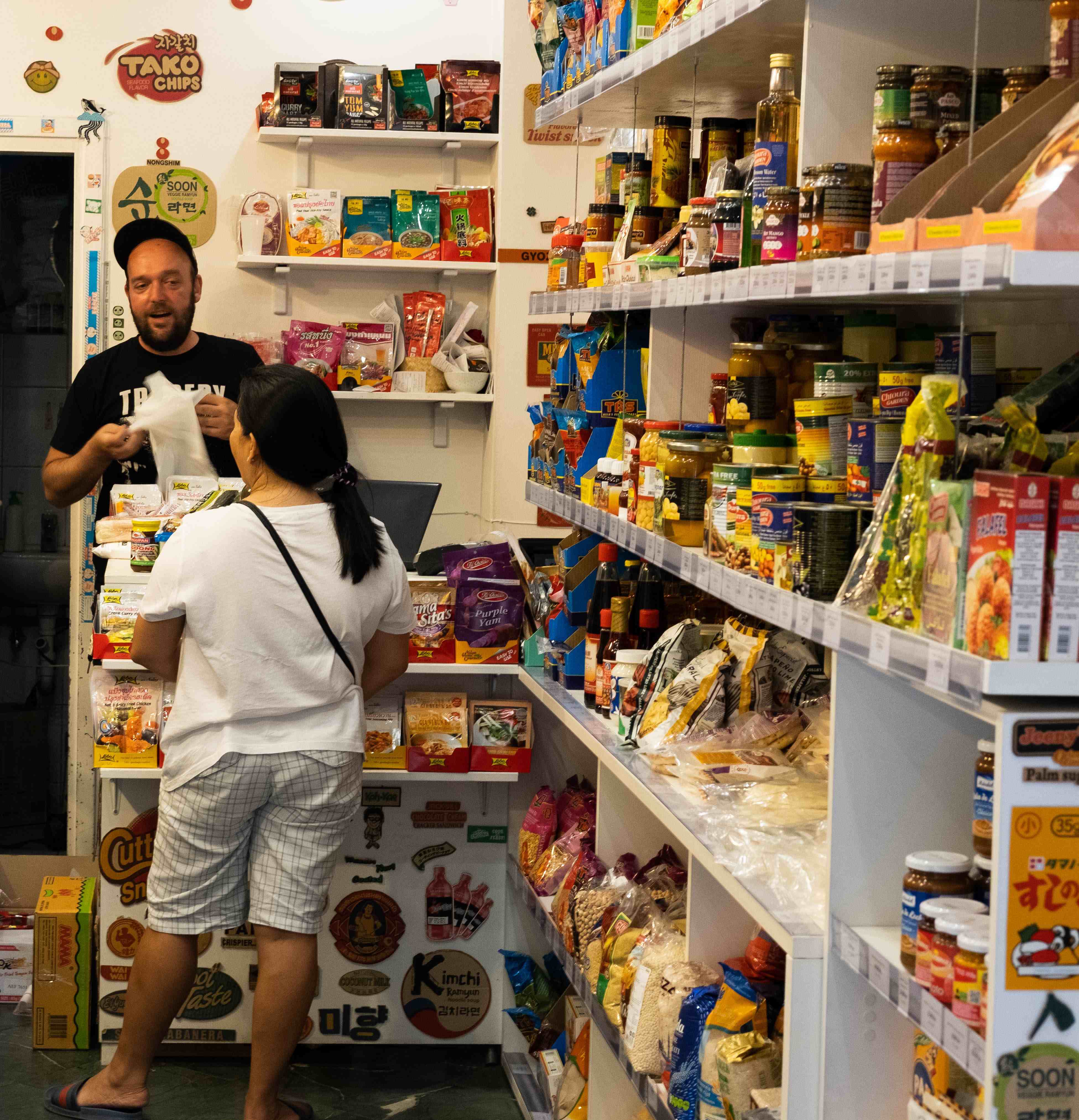
The first places I started travelling to were Greece and Turkey. I must have returned to those countries 10 times now. They really aren't so far from here and, when you go, there's something really similar about them, yet at the same time the cultures are very different (from here). Croatia is a mix of cultures, we have influences from there. In Istanbul, you can even find ćevapčići. The food is often very fresh, lots of vegetable dishes. They take great care over their food. For instance, if a guy does gyros in Greece, he takes great pride in what he does. The ingredients are always the best. It's a job probably he will do his whole life. People who do that job in other places, they don't have that sense. For them, it's just work.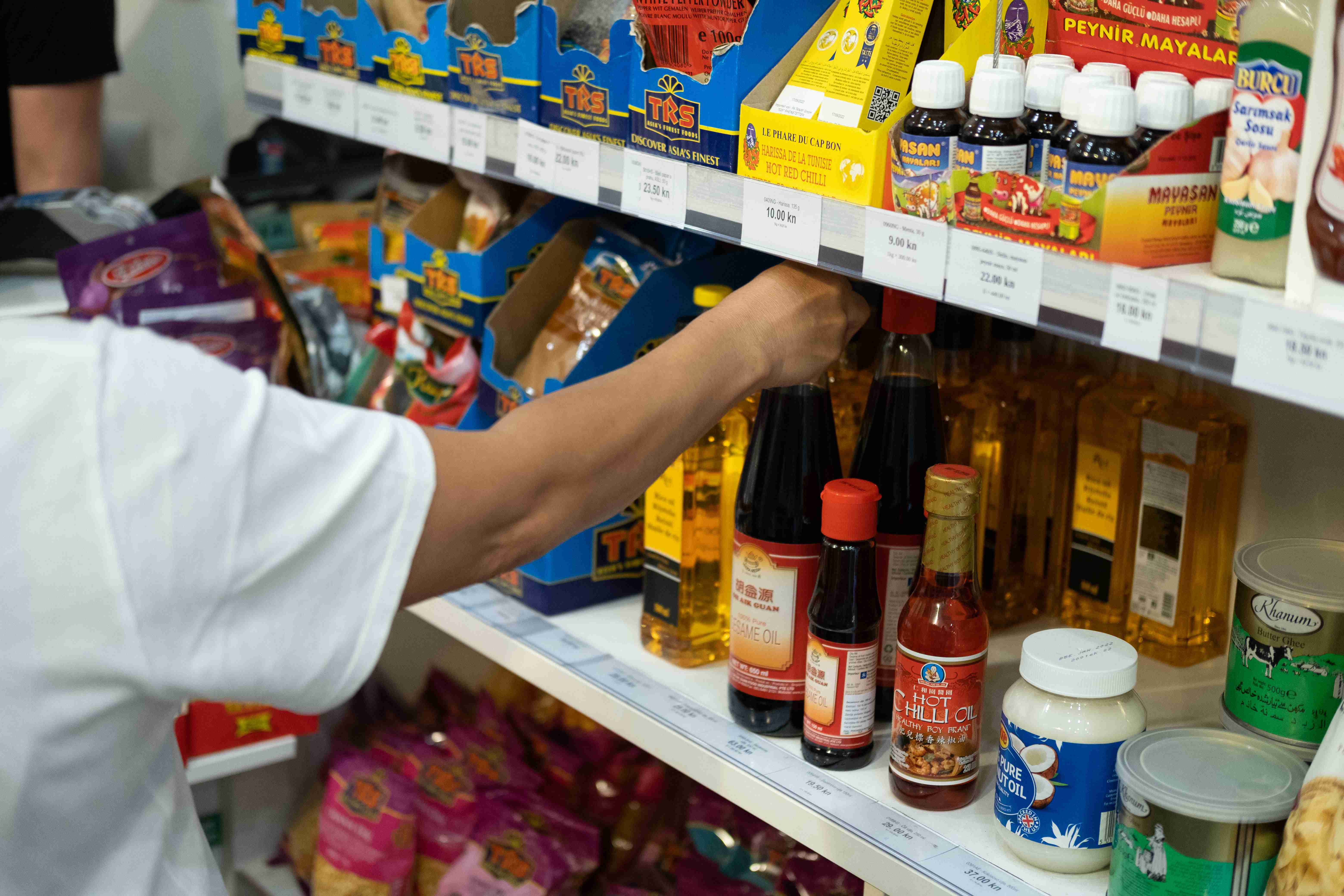
I visited Japan around 10 years ago for work. That was an excellent experience. I had plans for the first day I arrived, but they went out of the window. It was culture shock. I was there for around two weeks. I discovered ramen there. It was one of the easiest things for me to order. I ate sea urchins and onigiri. Everything was super tasty.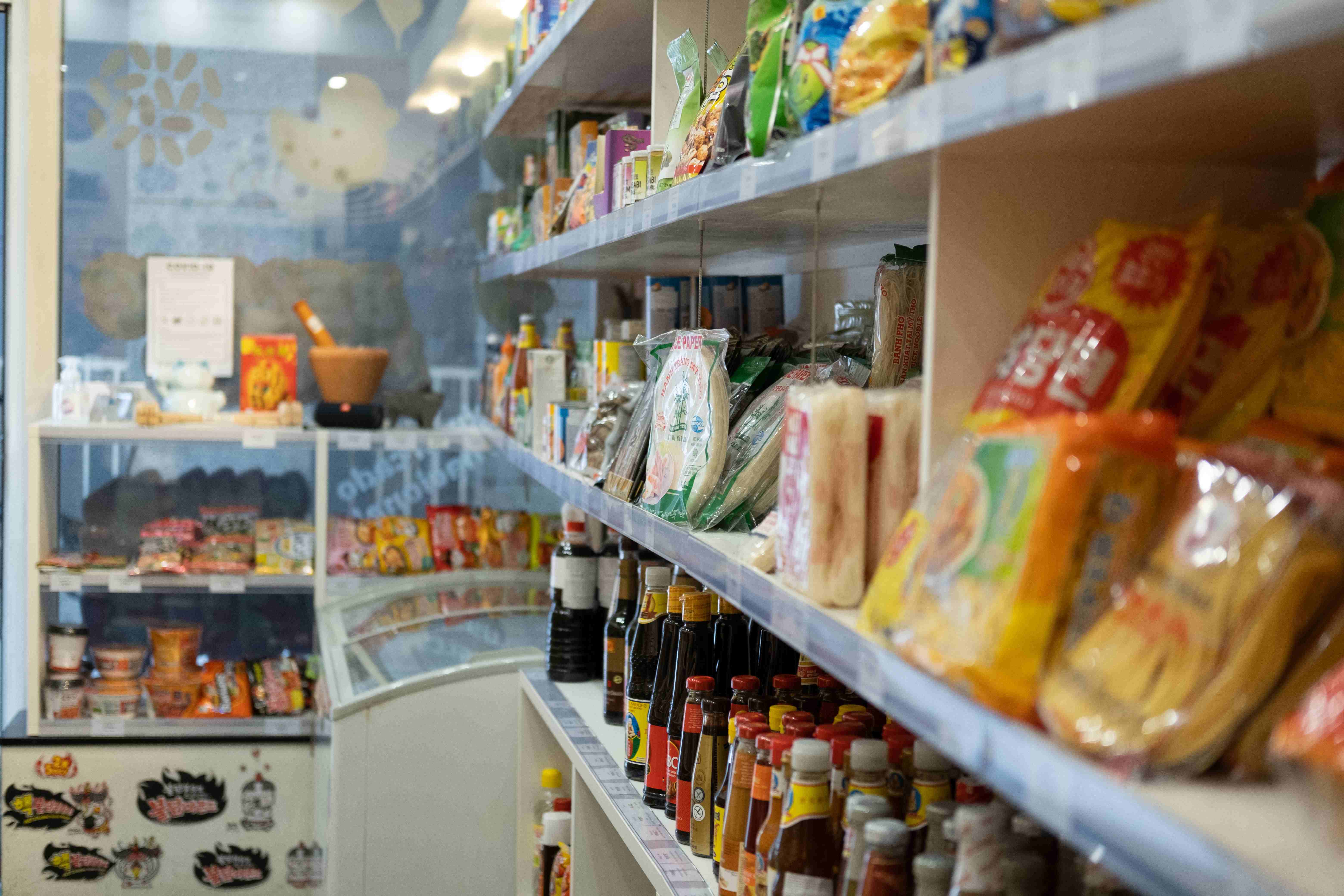
The stock in Pekinška Patka has been changing ever since we opened. We never used to have Mexican food. Now we have a whole shelf. And our Asian food range is now really big. We have foods and ingredients from India, the Middle East, Mexico, some from South America and also some West African basics like Egusi, Ogbono, Gari and Okra We try some things at home and if we want to promote them, we add them to the stock. Other new items come from customer requests.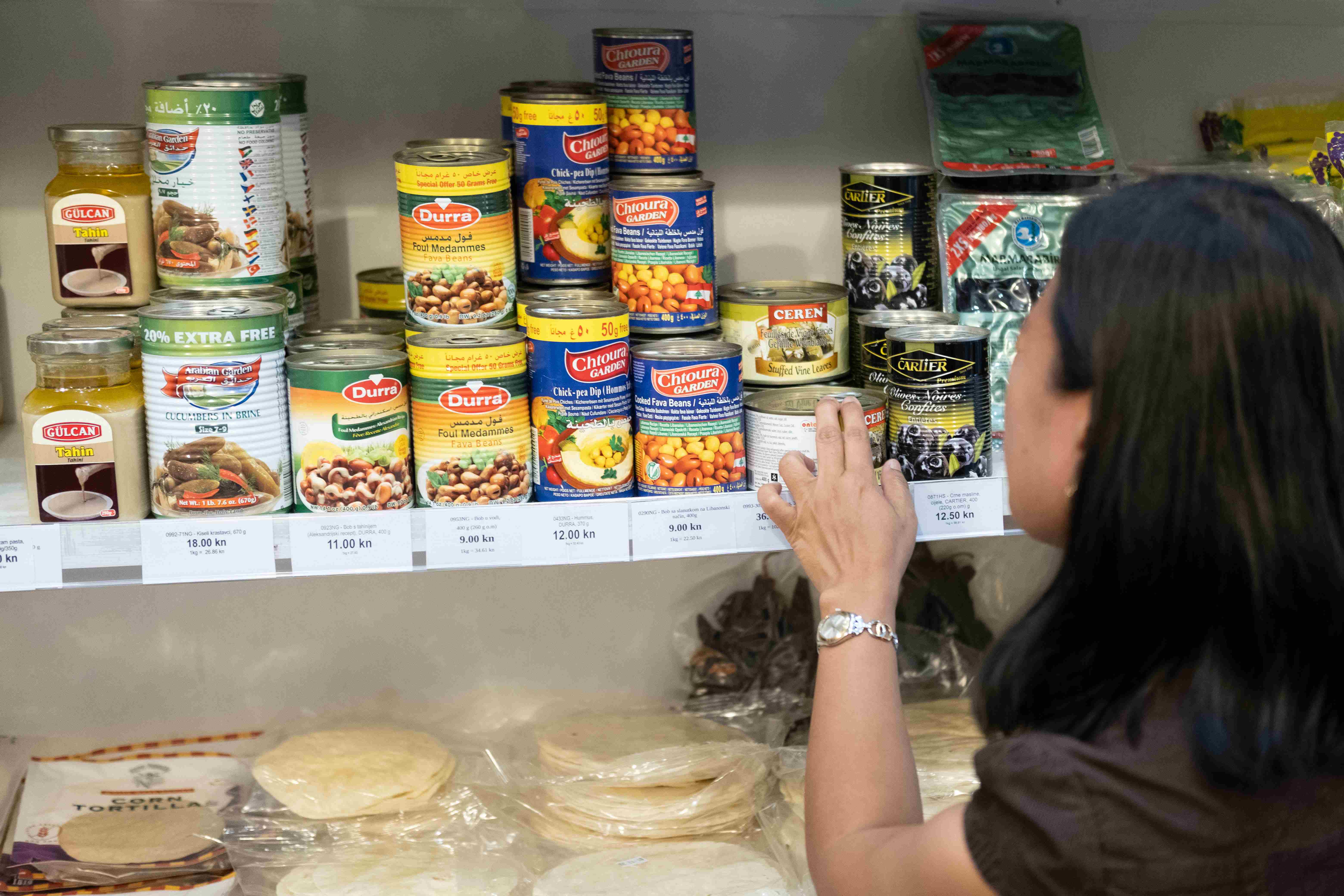
It's difficult to say what are the most popular things we sell. Everyone comes for different things. Filipino customers like to pick up ingredients for their tamarind soup - Sinigang. Some Croatians only come for noodles and Asian food, others only for Mexican or to buy spices. Most of our customers are Croatian, after that, lots of Filipino people come here, Israeli students, ex-pats and members of different Asian communities here in Zagreb. We like it most when families come in with their kids and you see that a child of maybe 10 years old is crazy about Asian food. When we were kids, it was impossible for our parents to bring us to a shop like Pekinška Patka. They didn't exist here back then.
Right on cue, TCN's chat with Josip was halted by two delightful Filipino ladies coming into the store. Regular customers of Pekinška Patka, they were only too happy to tell TCN what they like about the shop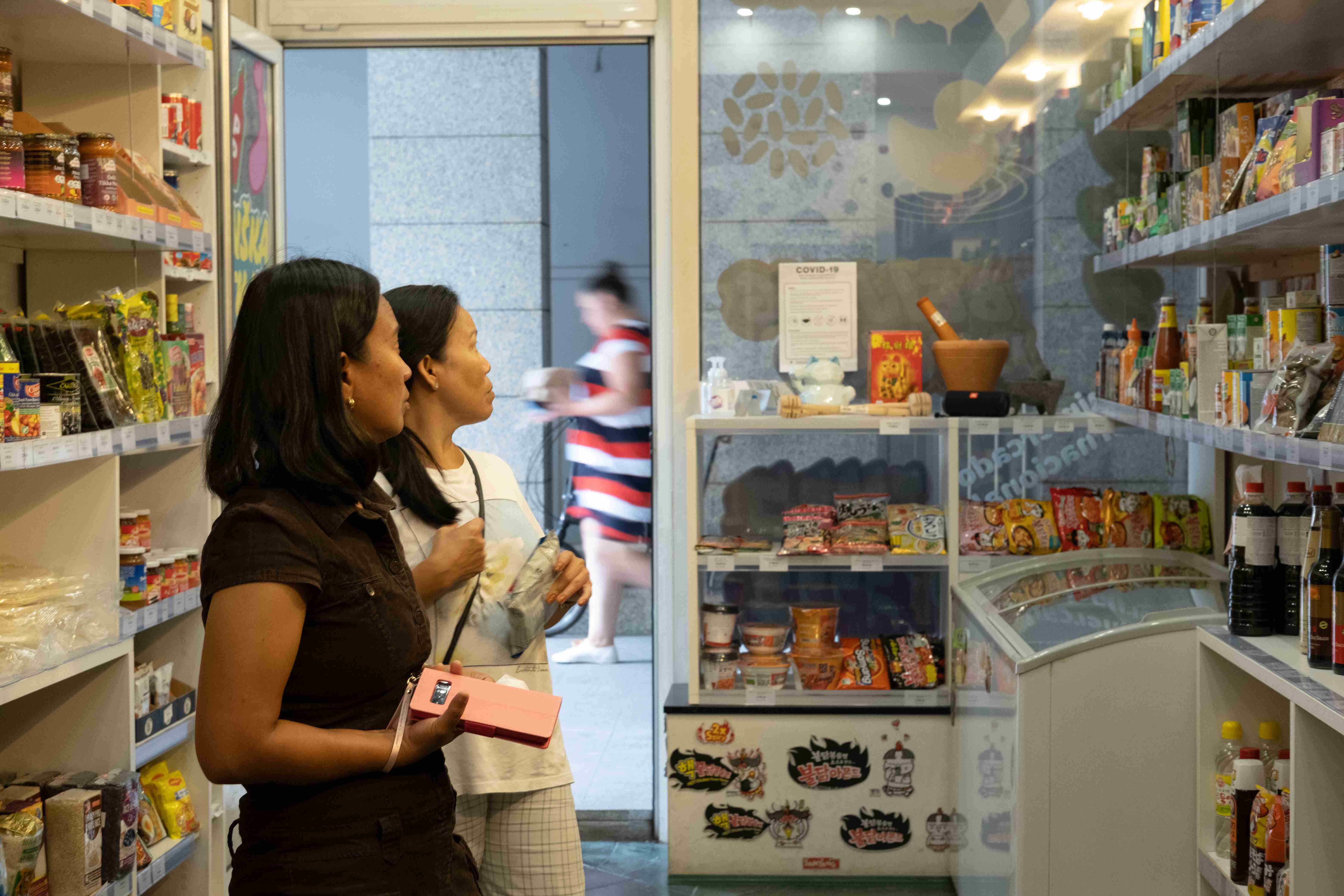
My name is Liezel and this is Marisol. We are from the Philippines. We discovered the shop on the internet maybe three months ago. We arrived in Croatia maybe one year ago. Life is much better since we discovered this store! We used to go to Metro, but it's far on the bus from where we live. They sell things here that we can't find in other supermarkets – good Oyster sauce, products we like from the Philippines, fish and snacks. The ingredients we buy here help us make some of our most famous national dishes, like pancit. You need special noodles to make it. Our Croatian friends are very curious about Filipino food. They love to try everything. And they like it, mostly.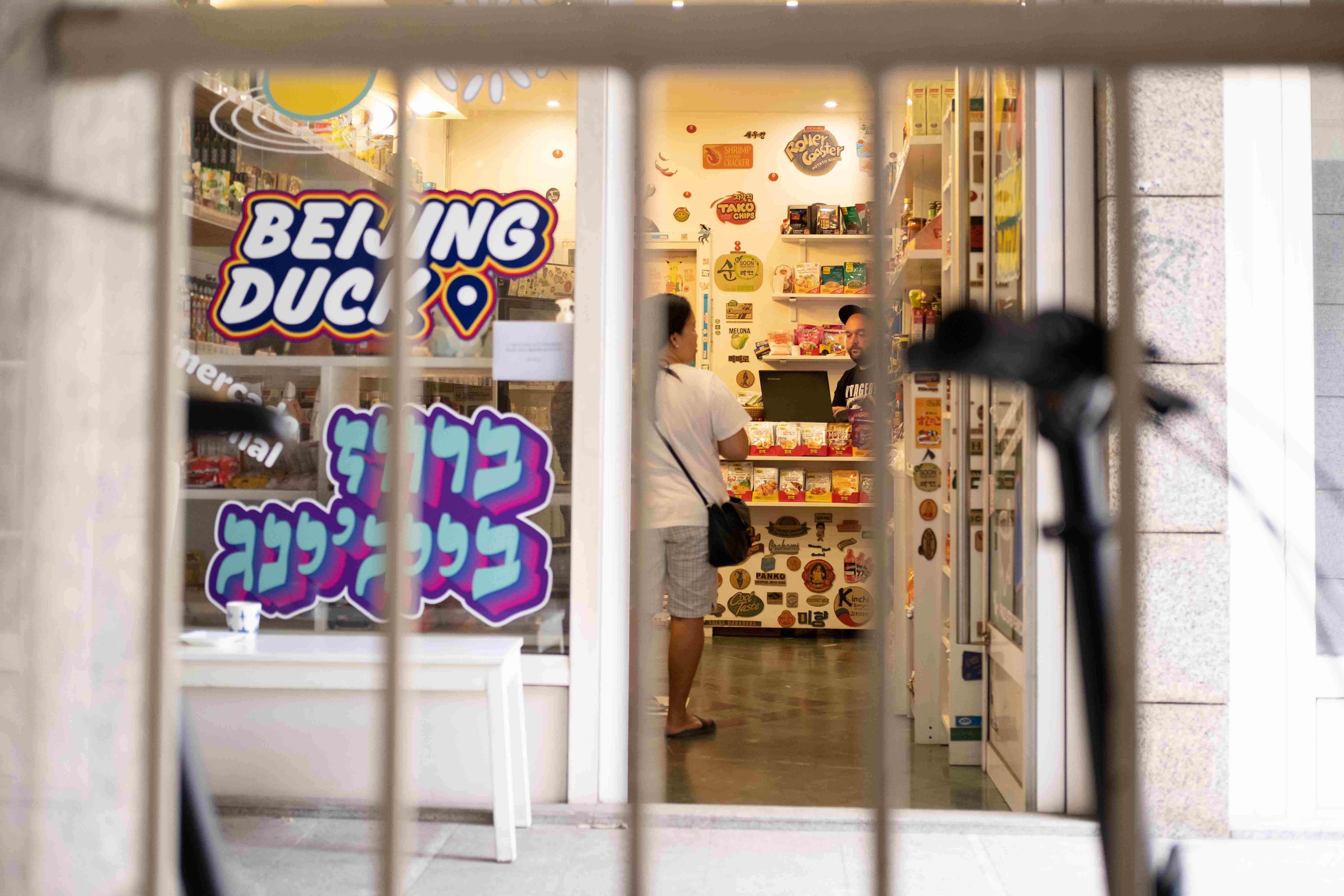
Josip: Regular Croatian customers usually get more adventurous over time. They like trying new things. And they ask for recommendations, which I'm always happy to give. I've tried almost everything in the shop. In our house, we always have Lao Gan Ma chilli oils from China, Mexican salsa verde, Petjel peanut sauce from Indonesia, which is very aromatic and Japanese mayo, which I recommend to anyone who likes mayo. It's really special.
You can visit Pekinška Patka at Vlaška 78
All photos © Mateo Henec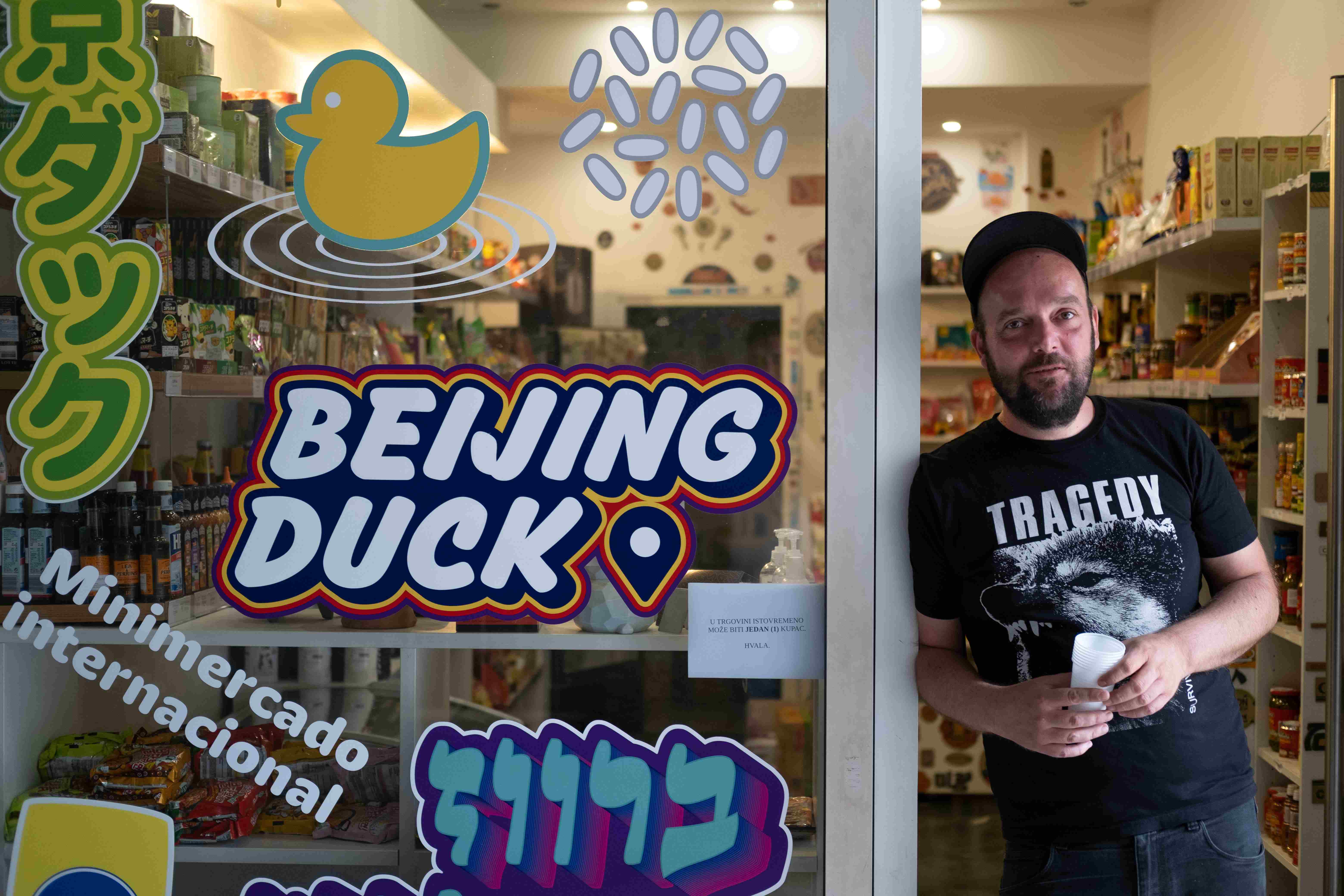
For the latest travel info, bookmark our main travel info article, which is updated daily.
Read the Croatian Travel Update in your language - now available in 24 languages
International Cuisine In Zagreb: Boršč, Pan-Slavic Food Specialists
September 15, 2020 - Continuing our series on Zagreb’s international food offer and the stories behind these cuisines and businesses. This time, Croatia's only pan-Slavic food specialists - Boršč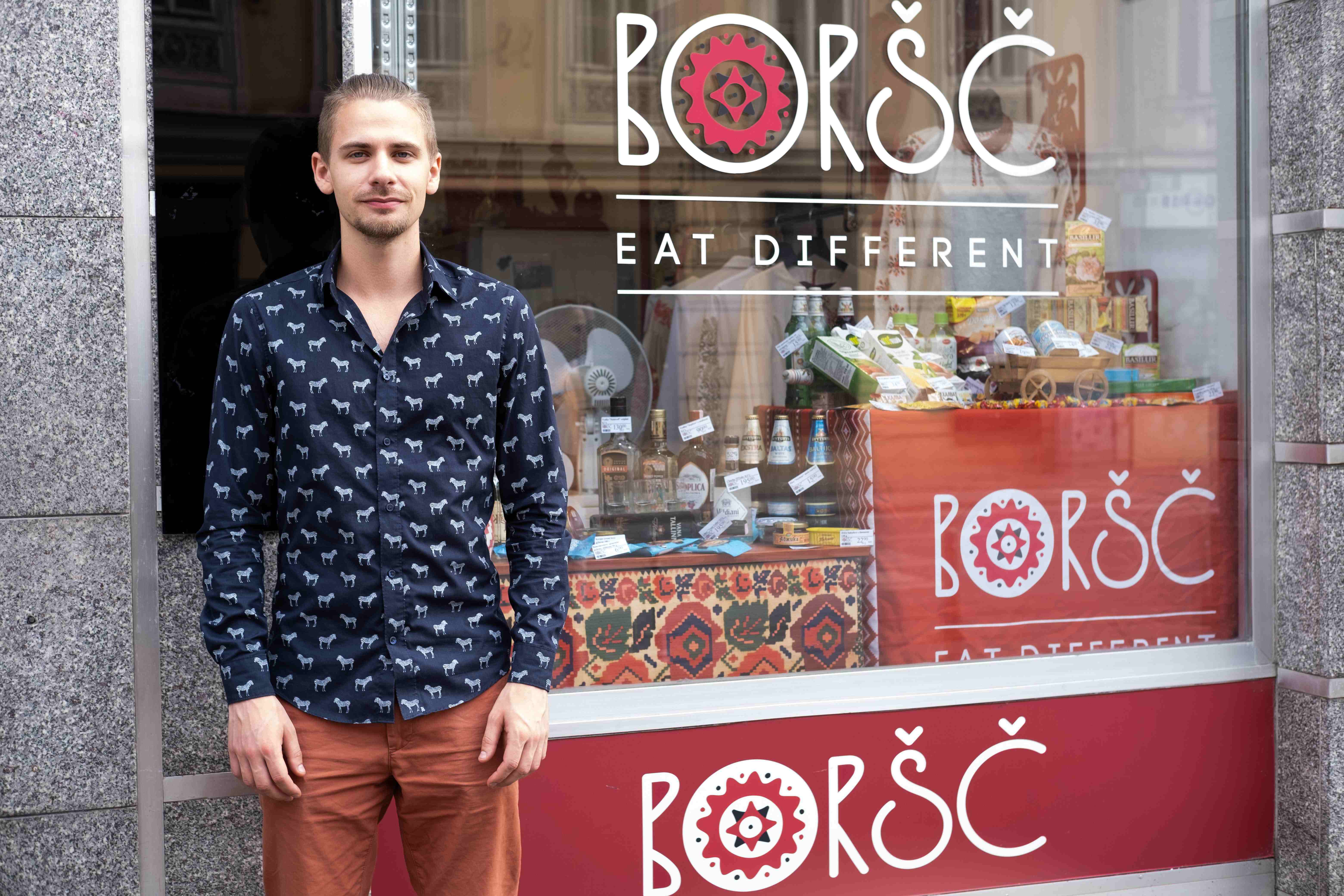
My name is Demian and I'm from Ukraine. My mother worked in Croatia, so I went to high school and to college here. She used to work in diplomacy. We moved around a lot. We went from Ukraine to Serbia, back to Ukraine, then to Croatia. Since coming here, aged around 15, I've been back to Ukraine only for visits – a month or two at maximum. Although I'm from western Ukraine, Lviv, a cultural town near the border with Poland, I also speak Russian and Croatian. And English. Apart from English, they're all Slavic languages, so you can find many words that have the same root. But, knowing both, I can say that the Russian and Croatian languages are really different from each other. Ukrainian is quite similar to Russian, although not as similar as some of the Balkan languages are to each other.
We opened Boršč four years ago. It started as a family business, me and my mum. We wanted to stock all the things we missed. Food and drinks from Ukraine, Poland, Russia, Estonia and Lithuania.
Ukrainian food is really not so sophisticated. Some dishes can take many hours to prepare and cook, but ingredients-wise, it's really not complicated. For instance, we have varenyky – the nearest thing you'd know them as is pierogi from Poland. They are traditional dumplings. You can fill them with anything you want. Cabbage. Potatoes, mushrooms. Potatoes and mushrooms. There are sweet versions with cherries or berries like strawberry. The savoury ones we usually fry in a pig fat which has some meat on it. It's a bit like Croatian čvarci, but softer and with more meat attached.
We have boršč. The recipe is a bit different to the Russian ones. Several countries lay claim to the soup. But, many do say that it is originally Ukrainian. Its name comes from a green plant which grows there, in wet areas, borschevik. The original boršč was green, not purple from beets. We still make the green one now, sometimes with different ingredients, and more often in summer. Sometimes it's completely vegetarian, other times it has meat and some people cook it using only vegetables and beef or pork bones.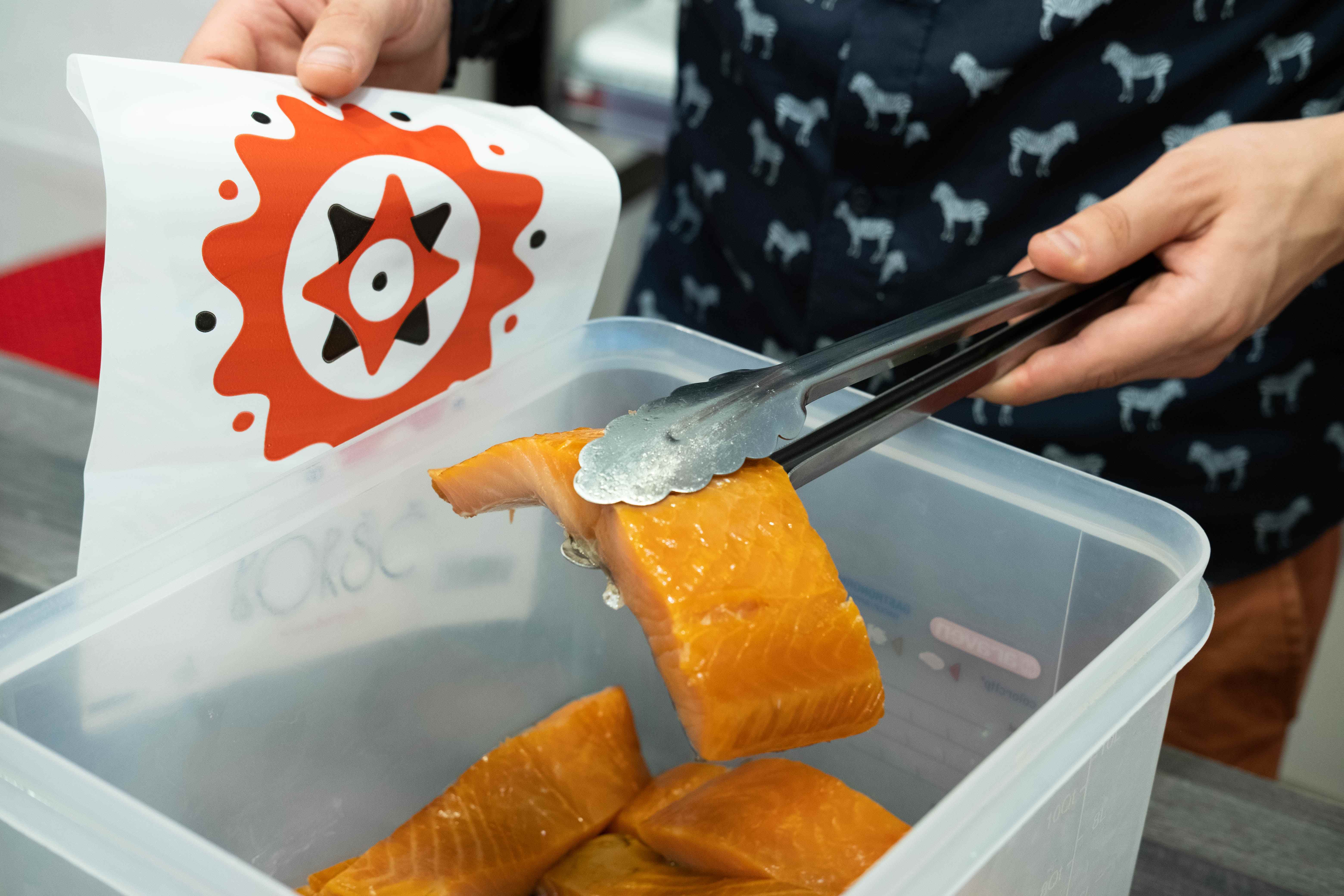
I've never come across a country more reliant on pig meat than Ukraine. If you think that Croatians eat a lot of pig, you should go to Ukraine! You have much more beef, veal and lamb in the Croatian diet. Those dishes you don't have regularly in the Ukrainian diet. We do eat chicken and, yes, there are some beef dishes. The fish we eat is completely different to that eaten in Croatian – ours comes from the Black sea, the Baltic or the North sea. The most popular is salmon. To be honest, I don't know the English names of the other fish, ha! I'm sure people in the UK have the same ones on their menu.
The climate in Ukraine can be tough. It's much colder there. Potatoes and cabbage grow well. In Croatia, you have beautiful tomatoes and green salad. You would not see that in Ukraine. But, our potatoes are the best. The land is very fertile, particularly in central Ukraine. It's good for growing.
In Boršč we sell several kinds of fish which are popular in Ukraine and Baltic countries – salmon, herring and trout. Our smoked salmon comes from the north sea. Almost everything in the shop comes from Europe, much of it from Norway, like the salmon, the red caviar, other fish. This salmon is actually smoked in the Netherlands. In Croatia, salmon is usually sliced thinly in the stores. They don't have the tradition like in northern countries to sell it in these styles of pieces. It's a really popular item in the store. We have caviar from the North sea, some from the Caspian sea. And we have salt cod – bakalar in Croatian - and cod liver, which is incredibly popular in Ukraine. It's considered a delicacy and is something of a national dish, often served on toast.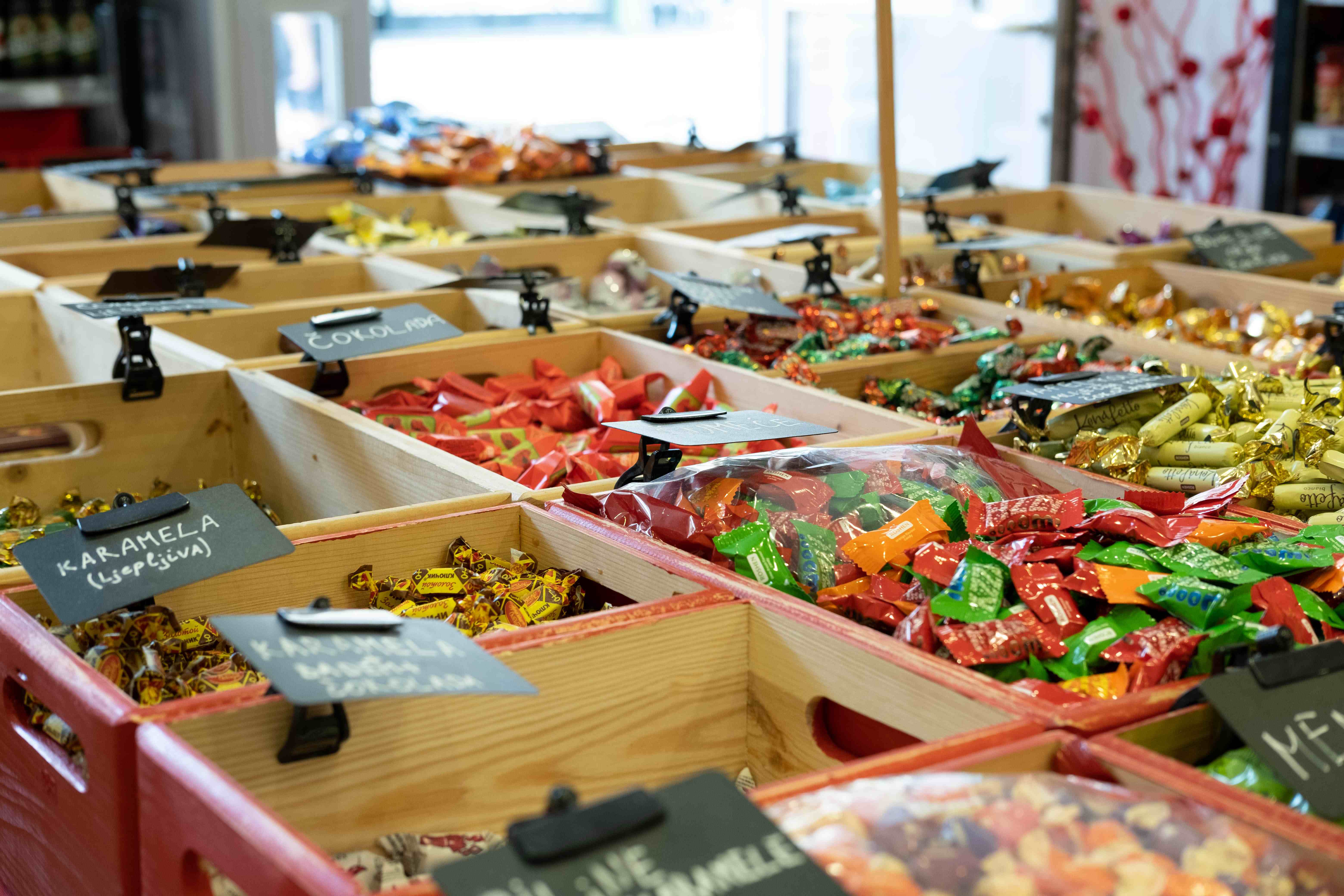 Chocolates from Russia, Ukraine and Poland were one of the biggest revelations TCN tried at Boršč - they were incredible! They have a higher content of (expensive) cocoa and less (cheap) sugar than most of the chocolates made in Croatia
Chocolates from Russia, Ukraine and Poland were one of the biggest revelations TCN tried at Boršč - they were incredible! They have a higher content of (expensive) cocoa and less (cheap) sugar than most of the chocolates made in Croatia
Sweets are really good in Ukraine and Russia. They're very different to sweets in western Europe. And different to those in Croatia too. Something like Lindt is much more sweet and buttery. Ukrainian and Russian sweets have a higher percentage of cocoa. Some of our Croatian customers are chocolate connoisseurs and these are very popular with them. Another popular purchase made by Croatians is halva – it's usual to only find the Turkish ones here. They are quite tough, made from sesame. Ours are softer, made from sunflower.
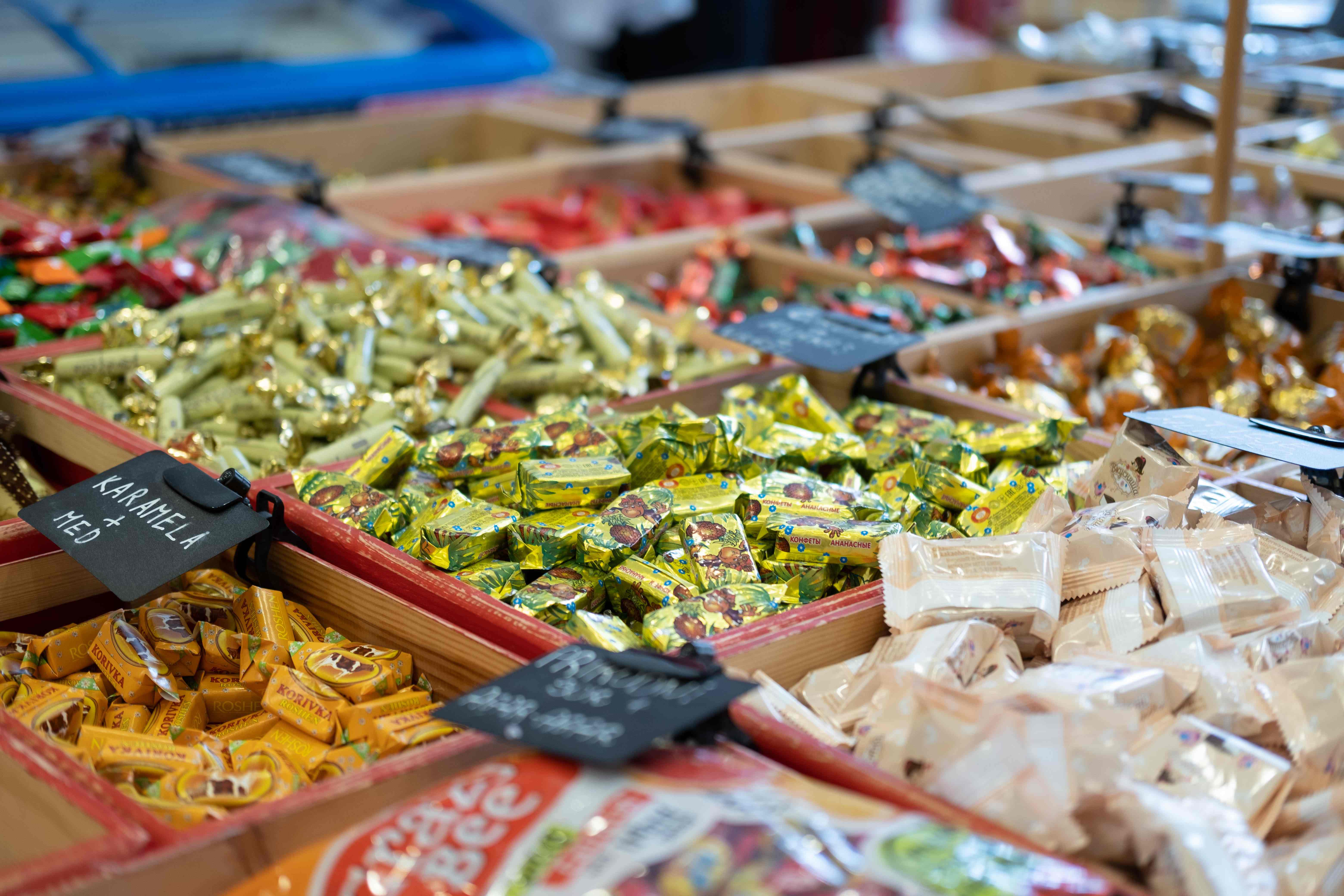 The colourful display of pan-Slavic specialist chocolates dominates the centre of the shop - you so want to try them all!
The colourful display of pan-Slavic specialist chocolates dominates the centre of the shop - you so want to try them all!
We have dark beers and light beers. They're from Lithuania, Russia and Poland. We have wines from Moldova and Georgia. We have sparkling wines from Russia and Ukraine. The Georgian wine is the best we have. Georgia claims to be the oldest winemaking country in the world. Winemaking is proven to be at least 8000 years old there. They have the oldest indigenous grape in the world. Georgians bury their wine underground in Kvevri - huge clay jars, which add an extra flavour. After the wine is fermented like this, it doesn't require the addition of preservatives when being bottled.
We have many preserved vegetables, like yellow tomatoes, seasonings and different types of sunflower seed, condiments that might be comparable to ajvar. This one is from Georgia and is a spicy mix of vegetables, using garlic, paprika and horseradish. One of our best-selling items is actually condensed milk. It's used not only in the Slavic kitchen but in the cuisine of Asia and South America.
This is kvass. It's a fermented drink, but it's non-alcoholic. It's popular in all north European countries, the whole Baltic region and especially popular in Russia. The taste is very specific. It's somewhere between Coca cola and beer. The ones we sell come from Russia and Ukraine. We also have a couple of types of birch juice. It's a traditional non-alcoholic drink made from the sap of the birch tree. It's maybe a little comparable to Croatia bazga, but much, much less sweet. It's very healthy. The sugars in it are natural ones. It has an incredibly refreshing taste and maybe a very soft lemon aroma (TCN tried this – it was amazing!)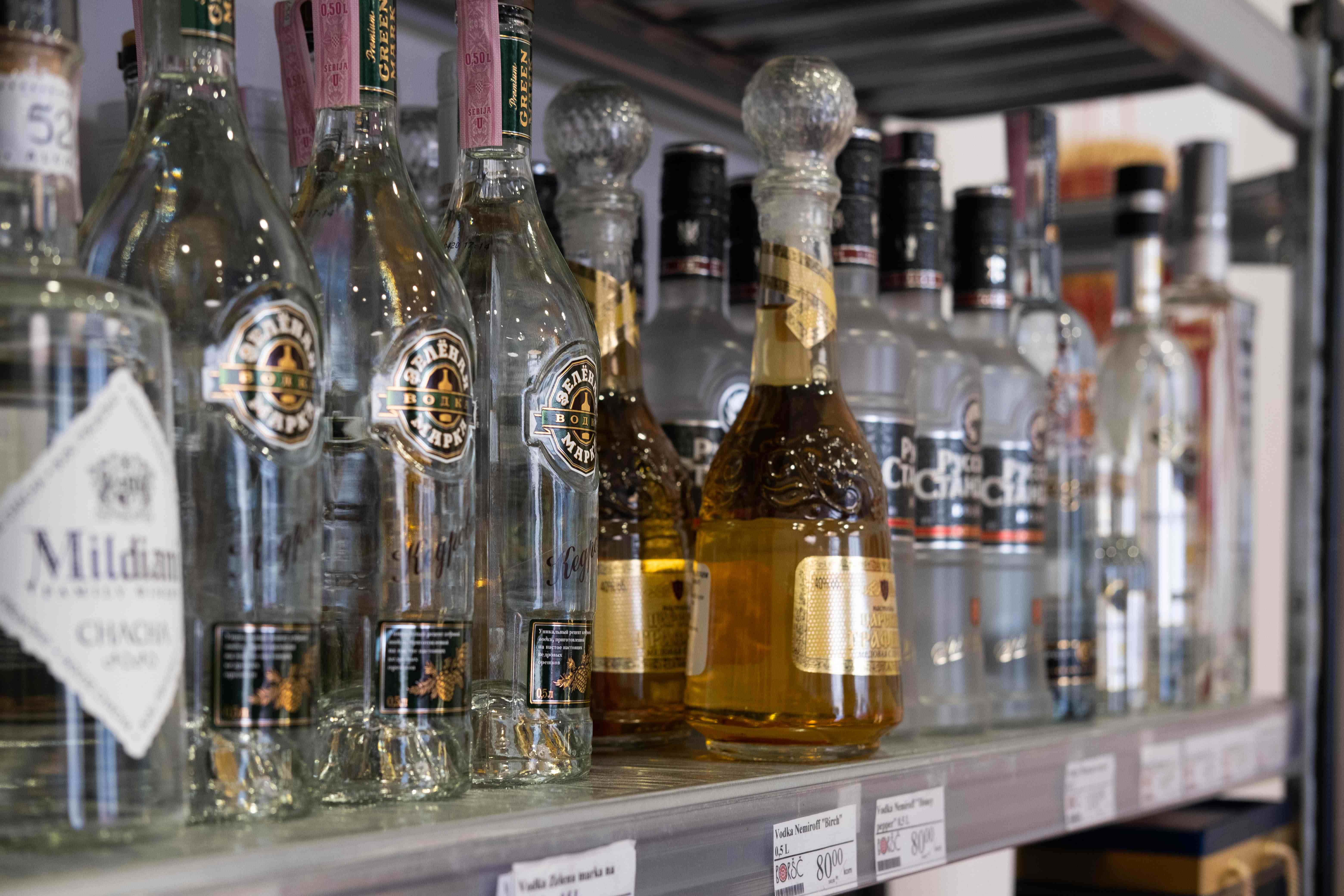
Some of the most prestigious items we sell are the varieties of hard alcohol. We have Armenian brandies. This one, Ararat, is considered to be the best one in the world. We have several vodkas, including Beluga, which is a premium vodka from Russia. We have a Ukrainian vodka and we have a honey and pepper flavoured one too. You can easily tell the quality of a vodka from the aroma and the aftertastes.
Most of our customers are actually Croatian - around 60%. Russians and Ukrainians are the next highest percentage. We have some Polish and Lithuanian people come in, but it's usually young people who are here to study with Erasmus.
I've been living in Croatia for about 11 years now. I enjoy life here. Everything is simple, easy, relaxed. It's considered one of the safest countries to live. And you can really feel that. It feels safer than the other two countries where I've lived. I'm maybe too young to yet know if I will stay here forever, but I can definitely say that I enjoy Croatia.
You can visit Boršč at Vlaška 58 (ulaz s trga Drage Iblera)
To follow our whole series on international cuisine and to follow the Croatian restaurant and gastro scene, keep an eye on our Gourmet pages
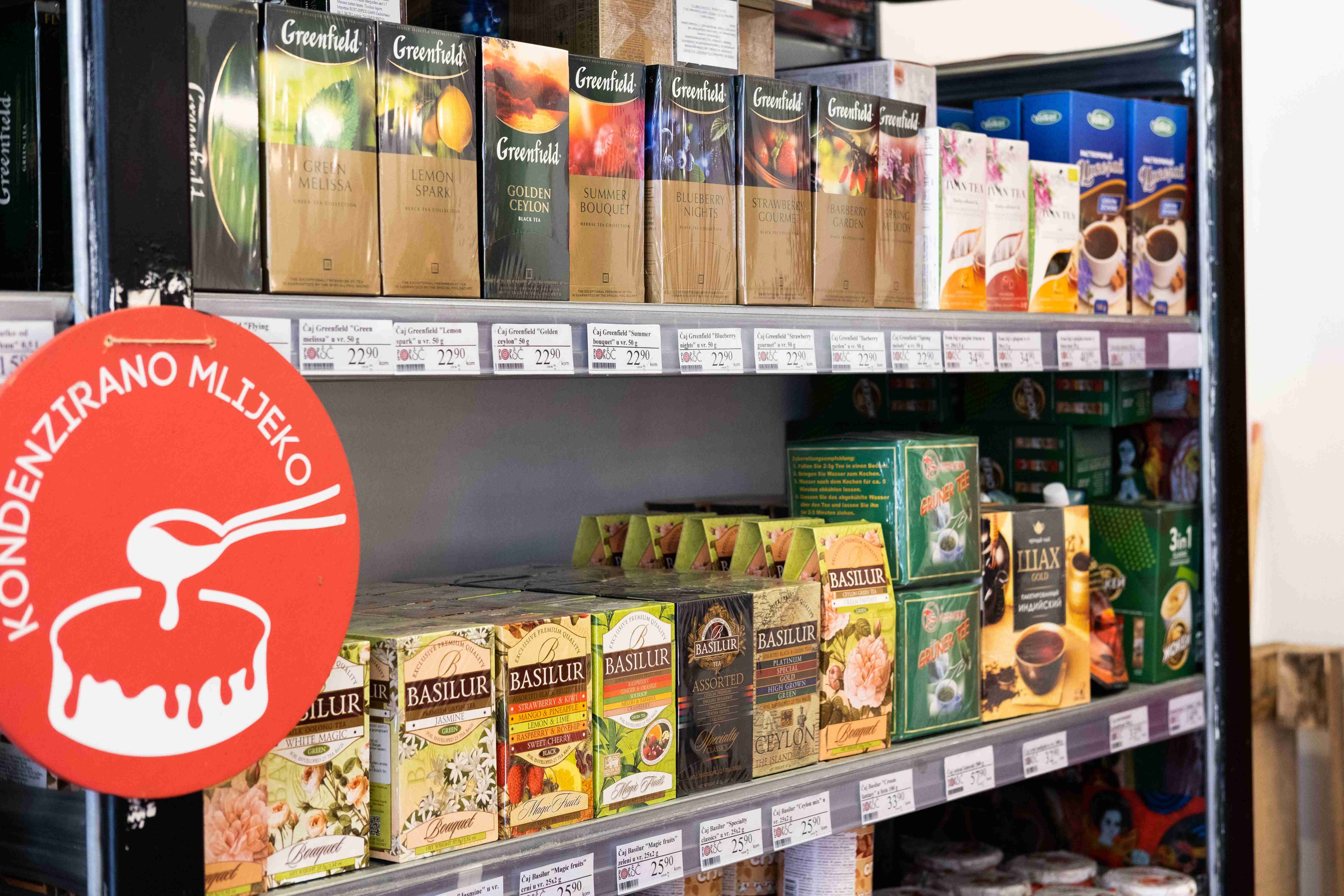
All photographs © Mateo Henec
For the latest travel info, bookmark our main travel info article, which is updated daily.
Read the Croatian Travel Update in your language - now available in 24 languages
International Cuisine In Zagreb: Khaos Thai
August 6, 2020 - Continuing our series on Zagreb’s international food offer and the stories behind these cuisines and businesses. This time, the spicy but light takeaway lunches of Khaos Thai.
Rinrampai Lateja and Saralee Madnui standing outside the Khaos Thai kiosk, next to Importanne Gallery on Vlaška ulica © Mateo Henec
Saralee Madnui: We’re both from Thailand. I’m from the south of Thailand, close to the border with Malaysia.
Rinrampai Lateja: I’m from Bangkok, the capital city. It’s in the centre.
Saralee: I’ve been here for five years, her for ten. We’re both here for the same reason; we’re married to Croatians. I met my husband when he was visiting Thailand. She met her’s while she was working on a cruise ship.
Saralee: Every region of Thailand has a different taste. In the north, the food is a little bit soft, but still spicy from curry paste. In the northeast, their flavours are really strong, spicy and sour, but they use much less fat. The land in that region is not so rich and the food is fast and simple, cooked quickly on the grill or in a pan. In the south, where I’m from, we have all the food; coconut, fish from the sea. The climate is good and anything can grow there. It’s a very rich cuisine. In central Thailand, the taste is more smooth, but flavoursome from strong seasoning.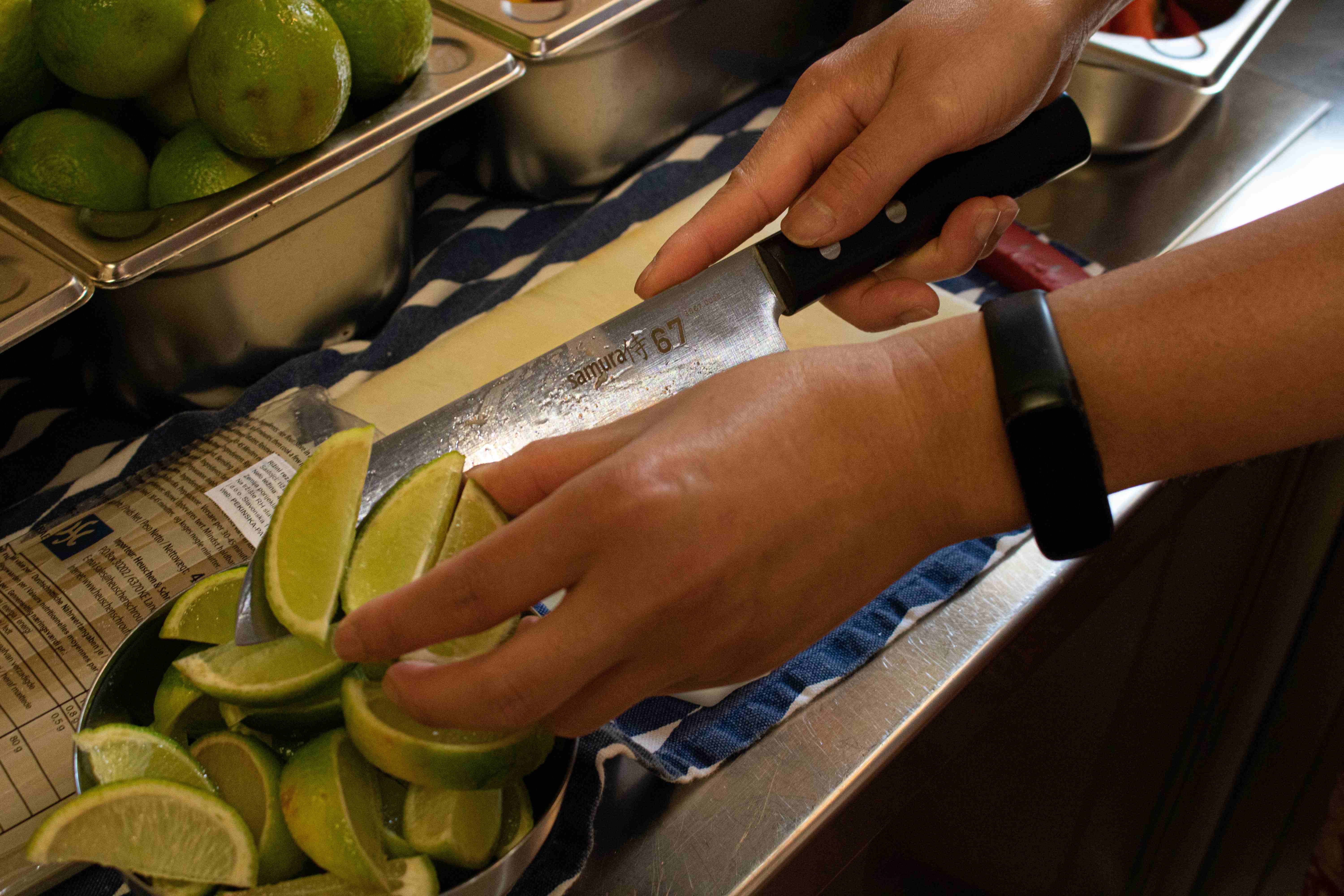
Khaos Thai © Mateo Henec
Saralee: The food at Khaos Thai is more like central Thai cuisine. We make some of the most well-known dishes from Thailand. Although, we also make Larb, which is from the northeast. It’s meat, fresh herbs, chilli, lime juice and rice. Salad is one of our most popular dishes here. Ours is salty, sour, crunchy and spicy, with dried shrimps, peanuts, green papaya, long beans, red tomato and chilli. It’s a very colourful dish. This is very typical of Thai cuisine; lots of different textures, flavours and colours. Like with Thai curry – the meat is cooked until it is soft, but we also add bamboo, for texture. The dish from this region that most reminds me of Thai food is goulash. It’s not the same, but it looks very similar to Massaman curry; red and with oil floating on the top. Goulash is spicy from paprika, whereas Massaman is spicy from herbs, a little more sour and it also has coconut.
Saralee: The first food that impressed me when I came to Croatia was cevapi. But, now I like more sarma. It has that sour taste that Thai people like, from the pickled cabbage. I also like it made with the green leaf (blitva). Interesting.
Saralee: When we are not working, we both very much like cycling. Cycling changed our lives.
Rinrampai: You cannot cycle in Bangkok. You would probably die. There’s so much traffic. And people just drive how they want. Never mind the rules. But, here it’s so easy to use a bicycle. You can get anywhere in Zagreb in 5 or 10 minutes on a bicycle. In Thailand, you must use a motorbike or a car.
Saralee: We love our bicycles here. We travel to work every day on bicycles. When we’re not at work we’re always riding our bicycles. I ride with my husband. I’ve ridden to Velika Gorica, Rakitje, Samobor and all over Zagreb.
TCN: You went all the way to Samobor on a bicycle?
Saralee: Yes. With my poor husband. But, he knows the tricks. He said “OK, we go Samobor for kremnšita. Then I will have power for the journey.” Ha! He was the same when we went to Velika Gorica. When we arrived, he said, “Ooh, do you remember that restaurant that is here..?"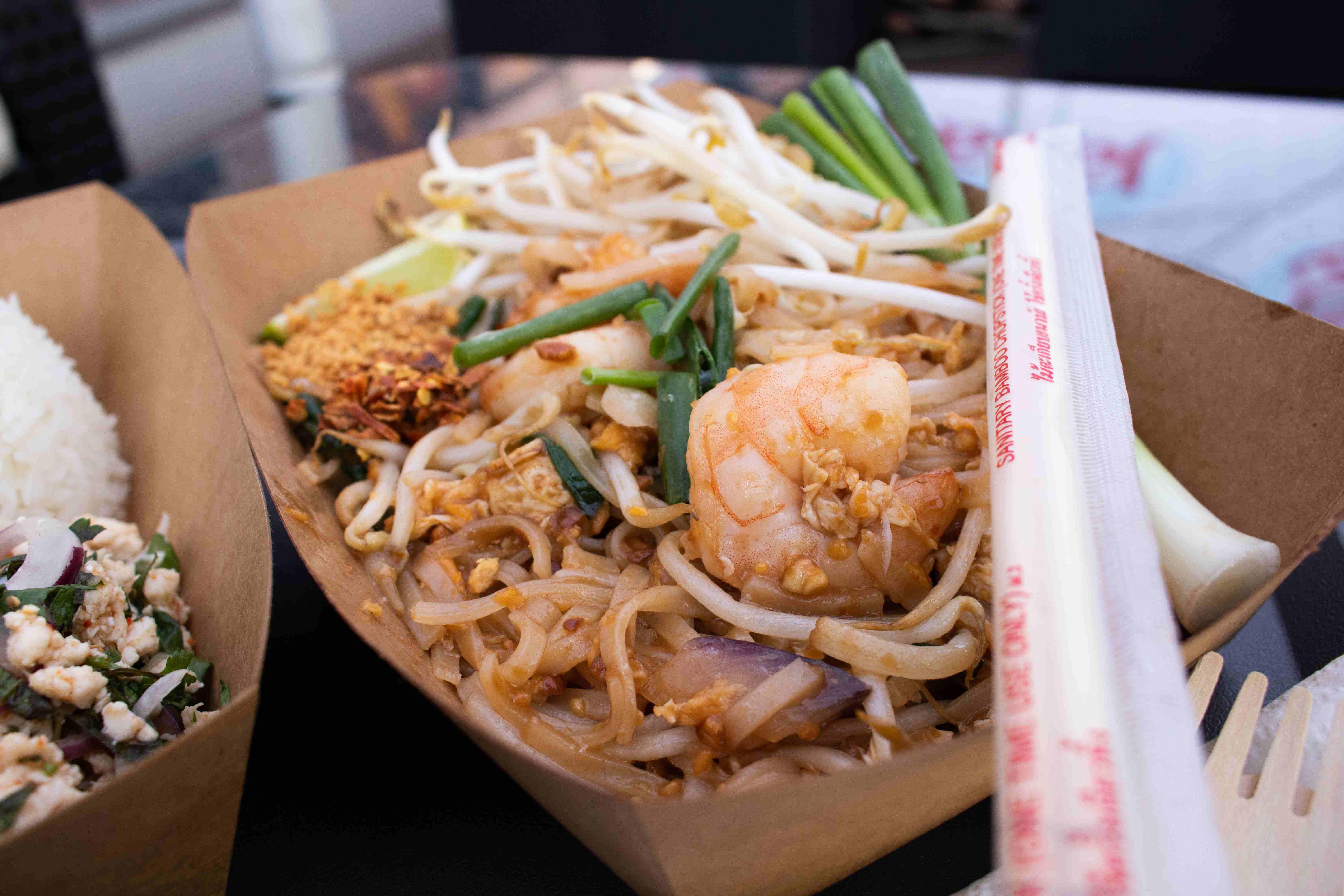
Pad Thai, one of Thailand's most famous dishes © Mateo Henec
Saralee: The dish people come back the most for here is Pad Thai. When we first opened, I thought maybe this might be too sweet for them. But, they really like it. They like the Thai Green Curry too. Some of our customers have been to Bangkok or other places in Thailand and they like to come here because our food reminds them of their visit. People tend to get the curry if they think Pad Thai is too soft for them in spiciness, or too light.
In the first week we worked, we opened at 12 midday until 8pm. There were queues around the corner. We couldn’t finish before 9pm. It was too much. There’s only the two of us. Nobody else can make this food. So, we had to reduce the hours. Now, we only work in the afternoons; midday until 5pm. But, that works very well.
Thai food is perfect for lunch; it’s all in one dish, you can hold it in your hands, it’s quite light food. The chilli and spice wakes you up and the lime and the herbs refresh you, so you are ready for the afternoon at work. It’s particularly good food for the summer.
Larb, a salad full of flavour from northeast Thailand and Pad Thai © Mateo Henec
Rinrampai: Life in Croatia is much easier than it is in Thailand. Less people, less traffic, it’s smaller, you can go anywhere. In Bangkok, if you have an appointment at 1pm, you must leave your house at 11am, sometimes earlier. The whole city is a traffic jam all day.
Saralee: Thai people and Croatian people are very similar in being very helpful, particularly to strangers. Any questions I had when I arrived, people were always happy to answer. Croatians are also a lot more friendly than other Europeans, in my experience. They are very open people. This is like Thai people too. Although Croatians follow the rules better than Thai people. Thai people ignore them all.
You can visit the Khaos Thai kiosk outside Importanne Gallery, at Trg Drage Iblera 10, on the corner of Vlaška ulica.
You can read the introduction to our series on Zagreb international cuisine and the first installment here
To follow our whole series on international cuisine and to follow the Croatian restaurant and gastro scene, keep an eye on our Gourmet pages here
International Cuisine In Zagreb: La Turka
August 4, 2020- Continuing our series on Zagreb’s international food offer and the stories behind these cuisines and businesses. This time, the authentic Istanbul experience of La Turka.
My name is Tayfun Azakli. I lived in Istanbul all my life. My mother’s family is from the part of Turkey near the Greek border, but my father’s family all come from the other side, near the border with Jordan. The western side is very close to the Balkan region in terms of food and culture. They like meat and vegetable dishes. On the Black Sea side, near Jordan, the diet is much more based on fish. The climate is also very different. It’s sub-Tropical there. They have tea fields. My grandparents were tea farmers. My mother’s parents were also farmers, but in their more European climate, they grew wheat, sunflowers, like here. They also speak different languages. On the Black Sea side, the people are not ethnically Turkish. They are Laz.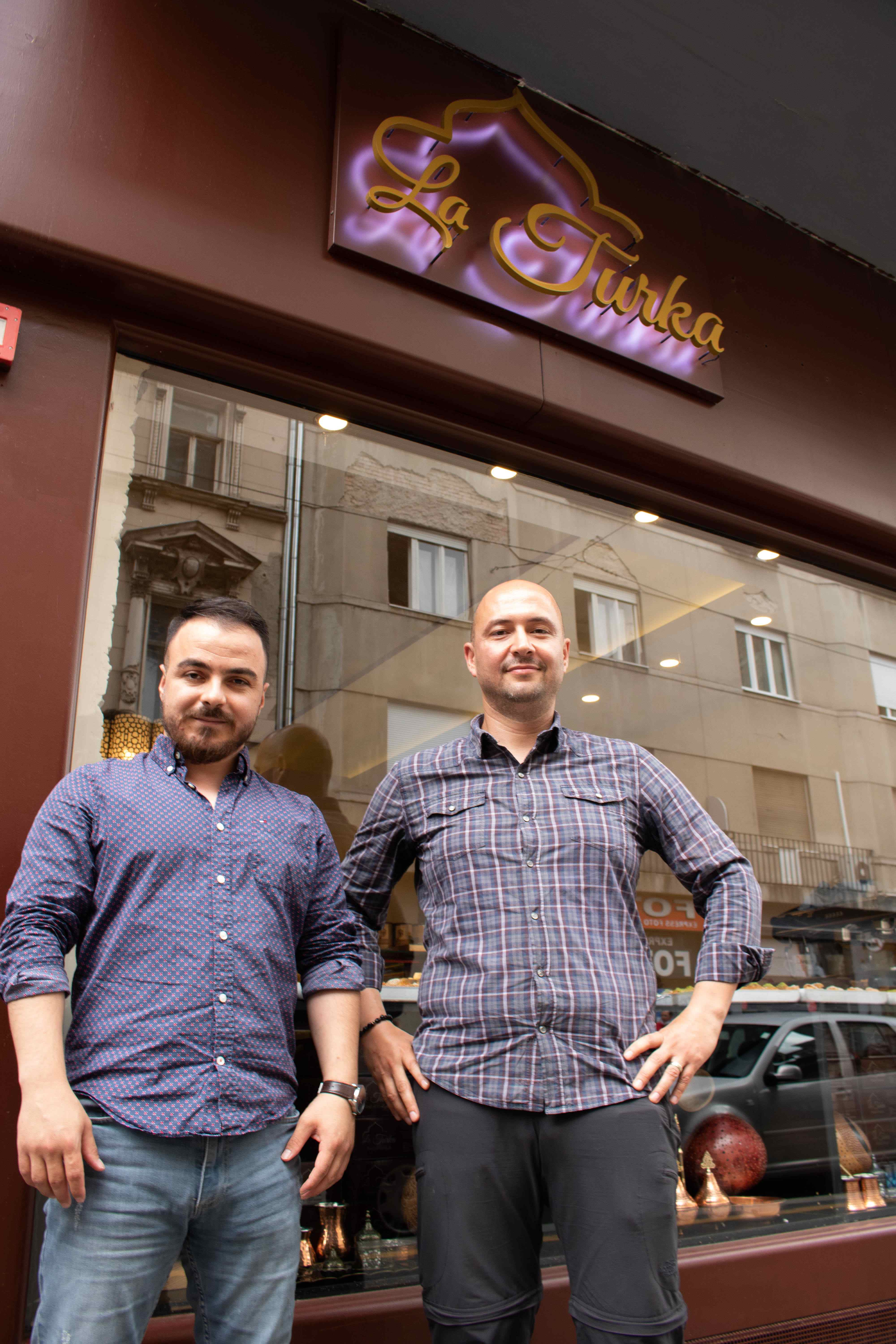
La Turka's retail manager Fares Hadad and co-founder Tayfun Azakli © Mateo Henec
I lived in Slovakia for two and a half years before coming here. I worked for Cisco Systems for 15 years – it’s one of the top 5 IT companies - and that’s where the job took me. My wife is Croatian and we decided to relocate here. We lived here for two and a half years initially, then we went to Dubai for six or seven years before coming back here two years ago.
I have two sons. I didn’t want them to grow up in Dubai. Dubai is very nice, but there’s a certain life standard. I think that if you get used to that lifestyle, you couldn’t be happy anywhere else. It’s very high end. Almost every house has a maid or nanny. Your income is three to four times what you would get in Europe. This is a huge contrast to my childhood. My mom was a teacher, my dad a civil servant. We had a limited income. Challenges to finish the month. I would work in the fields when I stayed with my grandparents. My kids were growing with a completely different perception of life in Dubai. I don’t expect them to have the same experience as me. Times have changed. But, I don’t want them to be handed everything on a plate.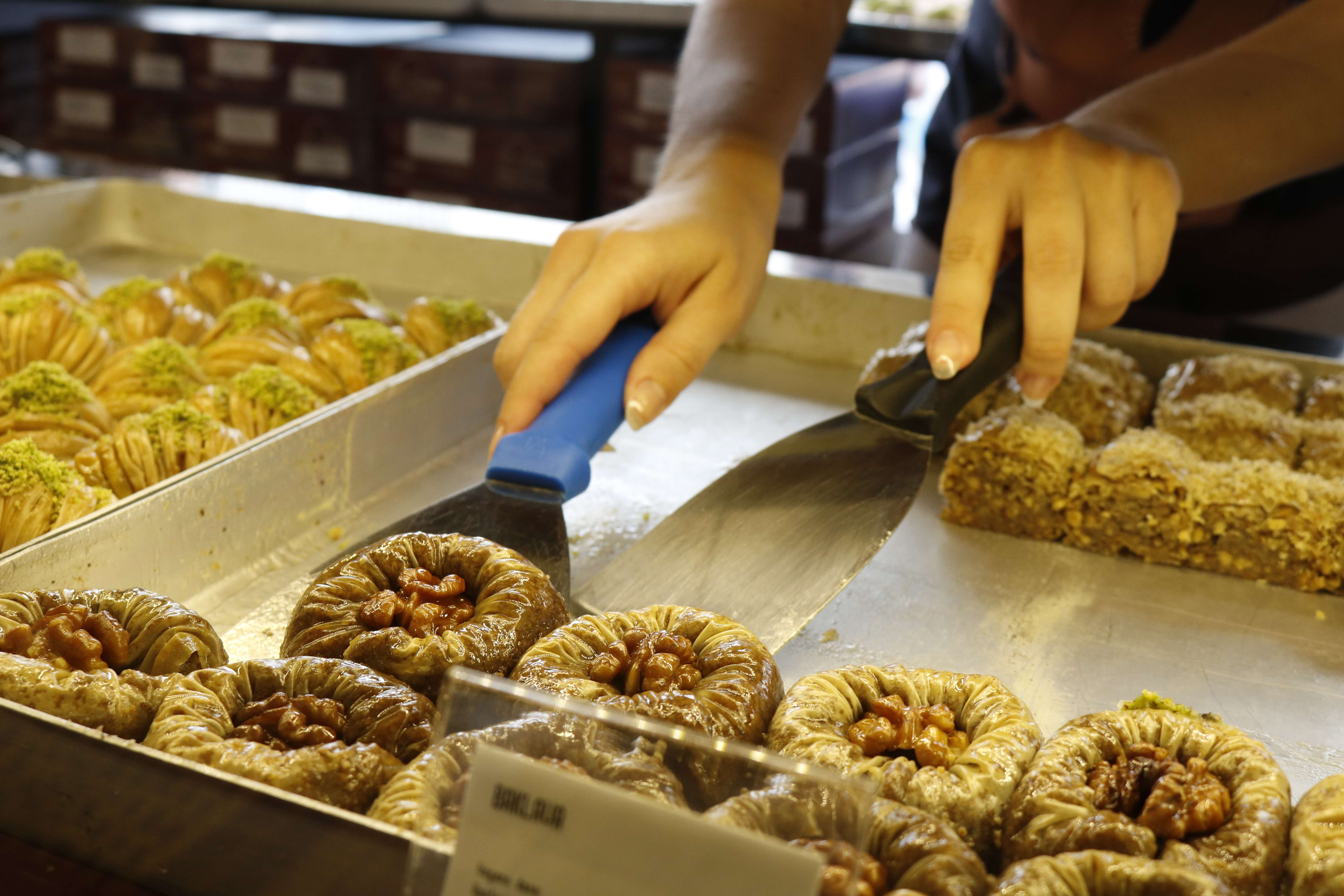
La Turka © Mateo Henec
Zagreb is a very safe and calm place to live. There is no rush in the day. The pace is quite slow. It can take some getting used to. People are nice. In any big city – be it Istanbul or London - people can be rushing and also quite rude. That doesn’t happen here. There are a lot of opportunities for businessmen here. It’s a good combination, a good place to invest. For me, at least.
In 2012 I met my business partner, Vedi Zarifgil, here in Croatia. He’s also Turkish and married to a Croatian. We started the company the next year. Originally, we were focussed only on wholesale and export. Only last year we decided to go into retail. We partnered with our friend, Fares Hadad, to open this store. It’s gone well. We plan to open two more in Zagreb during the next six months.
Ten years ago in Zagreb, there were only a few Chinese restaurants and a couple of bad Mexican places. Now, it’s very vibrant. The product that we sell is not foreign to people here, but they usually only know the Bosnian version. This is the Turkish version.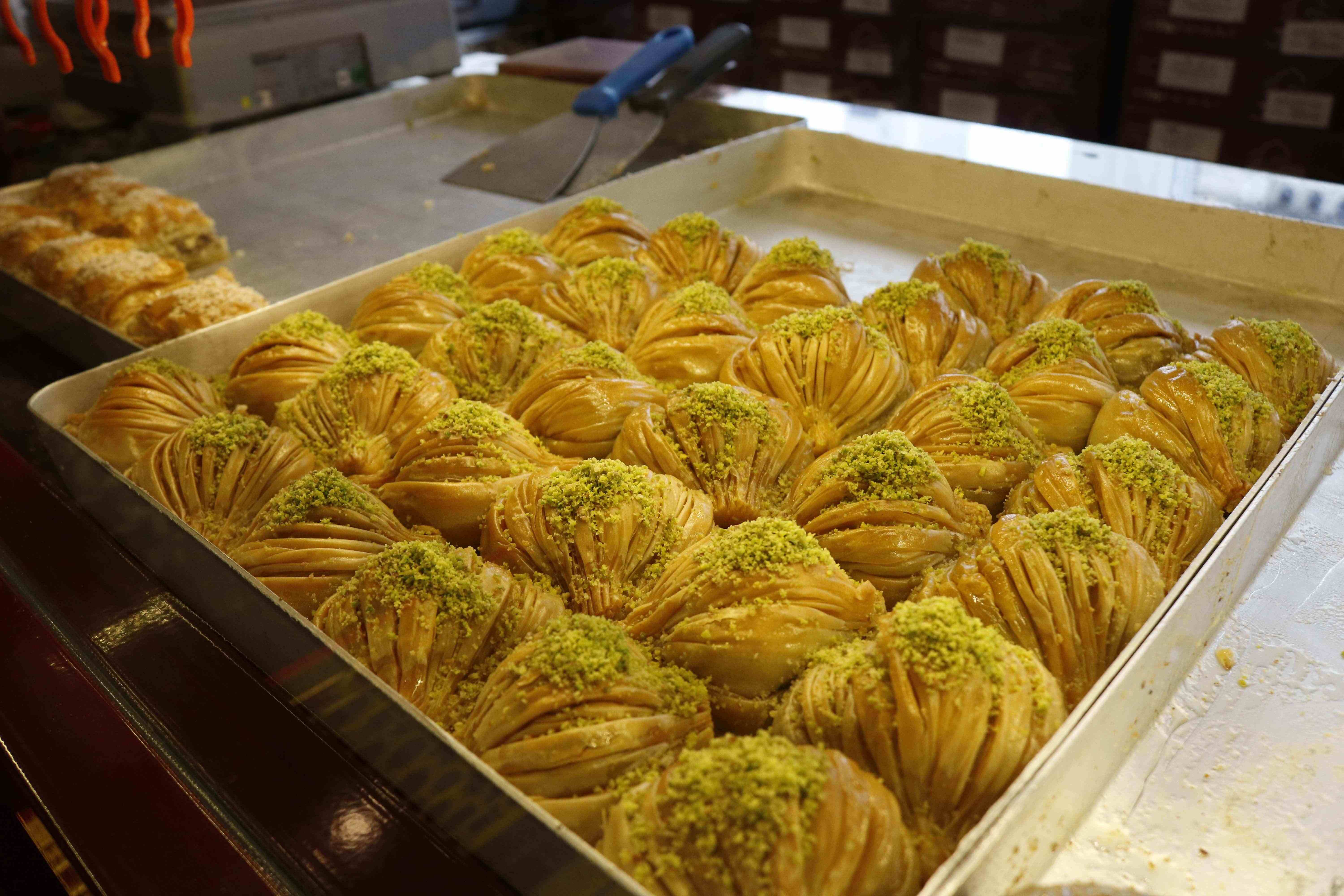
La Turka © Mateo Henec
We’re very careful about the quality of our product. For a niche product like this, I believe that you must present it at a very high quality. Then, it will sell. We didn’t expect to be so much of a hit, but we were successful from day one.
The main product we sell is baklava. The Bosnian version is made with walnuts. That’s what grows there. Ours has more finesse. In comparison, we make ours with extremely thin layers of pastry and the main nut we use is pistachio. In Bosnia, they tend to use a lot of syrup. Ours is drier. The syrup must not overpower the flavour of the pastry, the nuts, and the ghee (clarified butter). It’s a very fine balance. You should be able to taste each ingredient.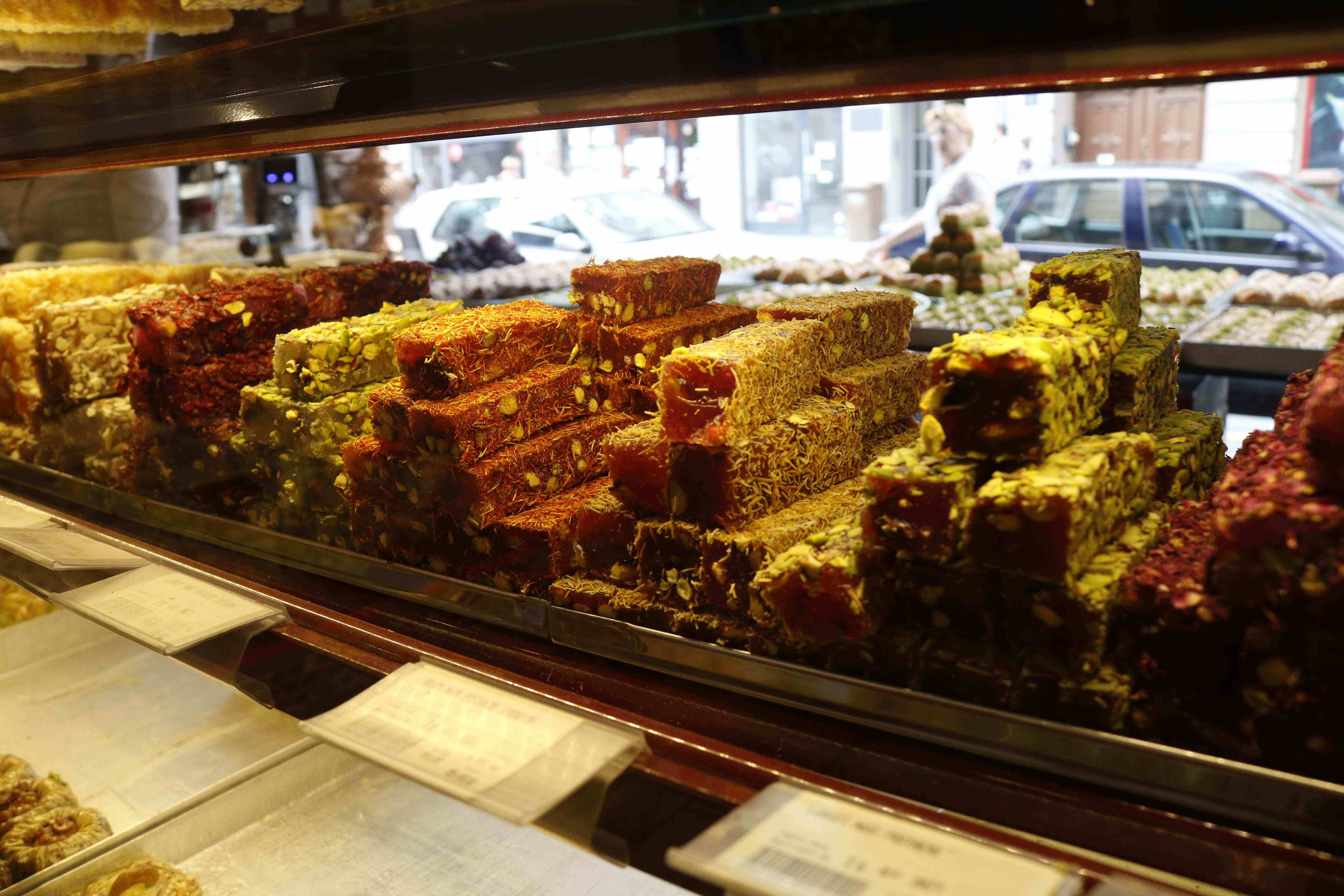
A selection of halva at La Turka © Mateo Henec
We import our pistachios from southern Turkey. Ghee is quite expensive; it’s rarely used in Bosnian baklava. Certainly not commercially. We have around 30 different variations of baklava on sale. We use almonds, pistachios, walnuts, cashew. For each of those varieties, we also have chocolate versions. For the classic baklava, the amount of nut is set, and it is ground. For alternative versions, we use whole pieces, sometimes with cream.
The presentation is key. It must look good. Classy. We want people to stop and look. We chose this street to open our business because everyone ends up here at some point. All visitors come to register at MUP. Our main client base walks here every day.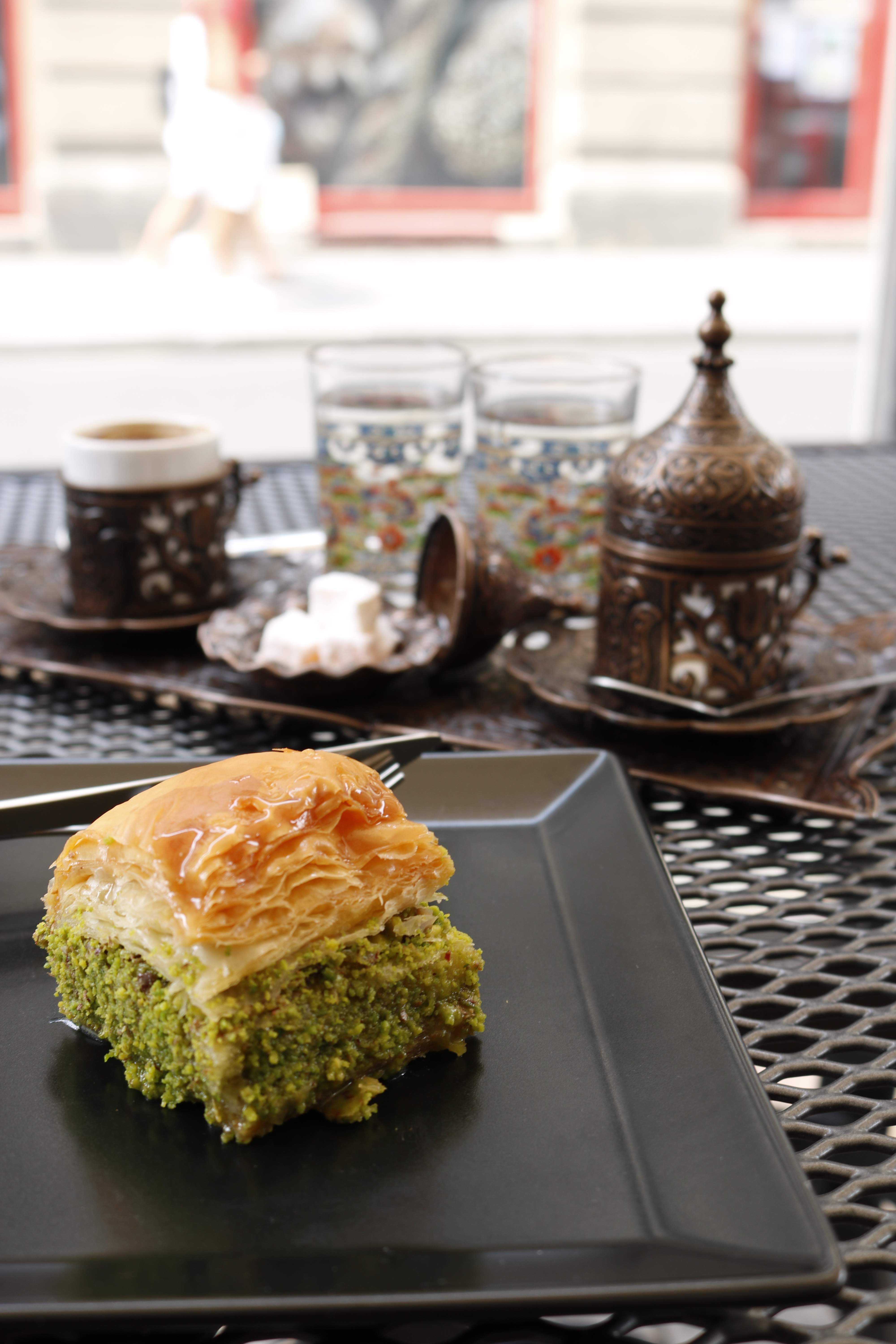
Baklava and Turkish coffee, served on the terrace at La Turka © Mateo Henec
We also have around 40 different kinds of Turkish Delight, halva (made from tahini, with different versions using cacao, chocolate). We sell the finest quality coffee available in Turkey. It’s quite unlike anything on sale here. We also have Turkish tea, which we present complimentary to anyone who comes to sit and try our food.
We want to offer an authentic taste of Istanbul. Everything from the interior design to the music we play helps us do this. We’re aiming to be a little like the Grand Bazaar. Except we don’t sell carpets, obviously. Ha!
You can visit La Turka at Petrinjska 47
You can read the introduction to our series on Zagreb international cuisine and the first installment here
To follow our whole series on international cuisine and to follow the Croatian restaurant and gastro scene, keep an eye on our Gourmet pages here
International Cuisine in Zagreb: Layali Lebanese Restaurant
July 22, 2020 - Offering Arabic food, Middle Eastern lunches like falafel and dips with salad, or spicy grilled meat wraps, Layali Lebanese holds an authentic provenance.
Once famous mostly as a run of beer bars and backpackers, over recent years Tkalčićeva in the capital's upper town has also become the focal point of international cuisine in Zagreb. But, even among the city's more exotic menu of meals, Layali Lebanese Restaurant stands alone. Offering Arabic food, their light, Middle Eastern lunches like falafel and dips with salad, or spicy grilled meat wraps hold an authentic provenance. Mastermind behind the menu is Zafer Hindash, who comes from the Middle East. He runs the restaurant with his nephew Bernard Solaković. Both practicing Muslims, alcohol is not permitted on their premises, so this is a destination that's all about the food
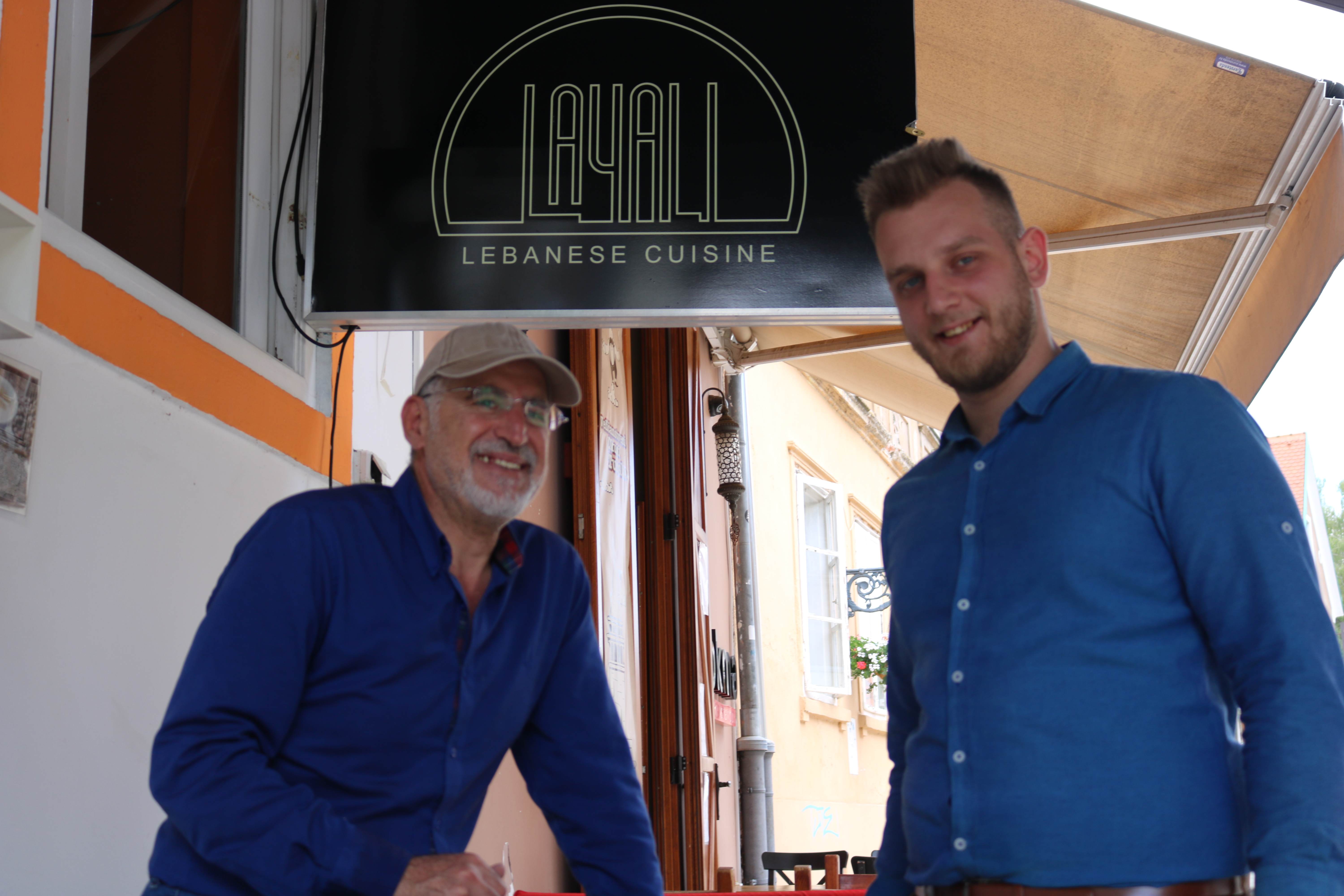 Zafer Hindash and his nephew Bernard Solaković © Total Croatia News
Zafer Hindash and his nephew Bernard Solaković © Total Croatia News
Zafer: My name is Zafer Hindash and I'm 53. I was born in Jordan but I left there in 1976. I lived almost all my life in Dubai. My brother got a job there, so we moved the whole family. The things I remember from Jordan are the people, the neighbours, the atmosphere. It was a very similar feeling in Dubai when we arrived. There were not so many rich people there back then, unlike today. You cannot imagine what it was like to be there to see all the changes. Really, it felt like everything was running too fast. You could walk down the street one day, come back the next and it would look totally different. A few years ago, I was searching for the next place I could be, for retirement. I went to Turkey, I visited here and I liked it. I left Dubai in 2017 and came to Zagreb.
Bernard: I didn't really know so well Arabic food until Zafer came here. I'd tried things my aunt would make on her visits here from Dubai. The food inside a Muslim home here in Zagreb is different from what you would find in a Catholic home. We brought many dishes here from Bosnia, which is where the older generations of my family are from, so it's very normal for us to make pita and burek at home. Some people might only buy this from pekara. We also make baklava at home and other sweet specialties.
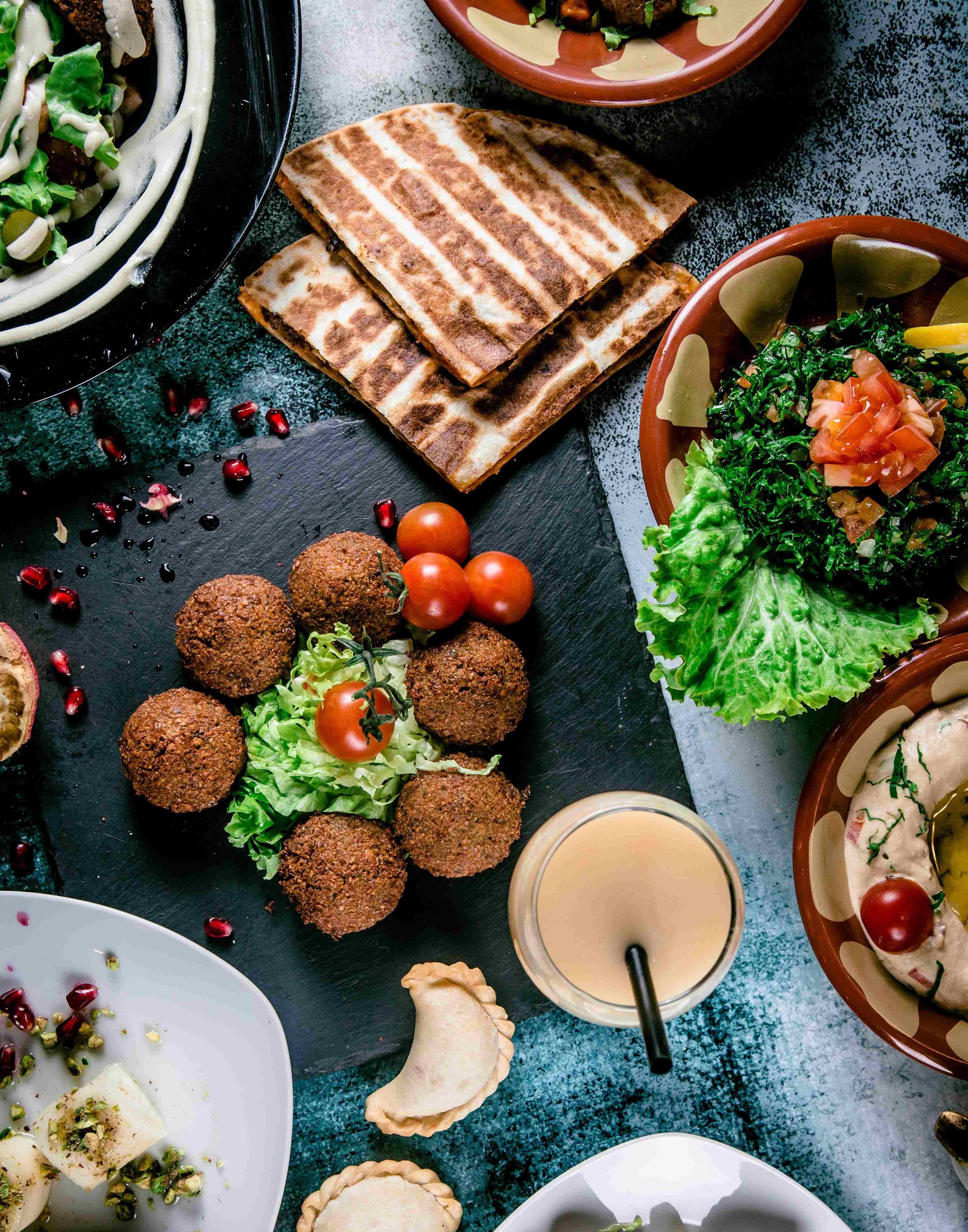 © Layali Lebanese Restaurant
© Layali Lebanese Restaurant
Zafer: I travelled a lot and, honestly, most places are the same; you can find good people everywhere. But, I love it here. The people, the neighbours. The pace of life is more stable here than in Dubai. I am at an age now where you cannot handle everything moving so fast. This is now the best place for me to be.
Bernard: At first, people couldn't understand why we don't serve alcohol here. Tkalčićeva is so famous for drinking. But, after we explained that it is a religious thing, that this is our Hallowed way of working, people accepted it. We offer instead our Arabic teas and coffee.
Zafer: I was in business all my life. This is the first time I worked with food. Before this, it was only a passion in my home. Preparing food is like the sea; so many spices, so many different combinations. The food we make at Layali is the food I love to make at home. I would describe our food as Arabic, but really now, some of it is international. They ask for it everywhere. And not just falafel and hummus. I get shocked when people ask for muhamara or fatoush. I guess food and people travel a lot more these days.
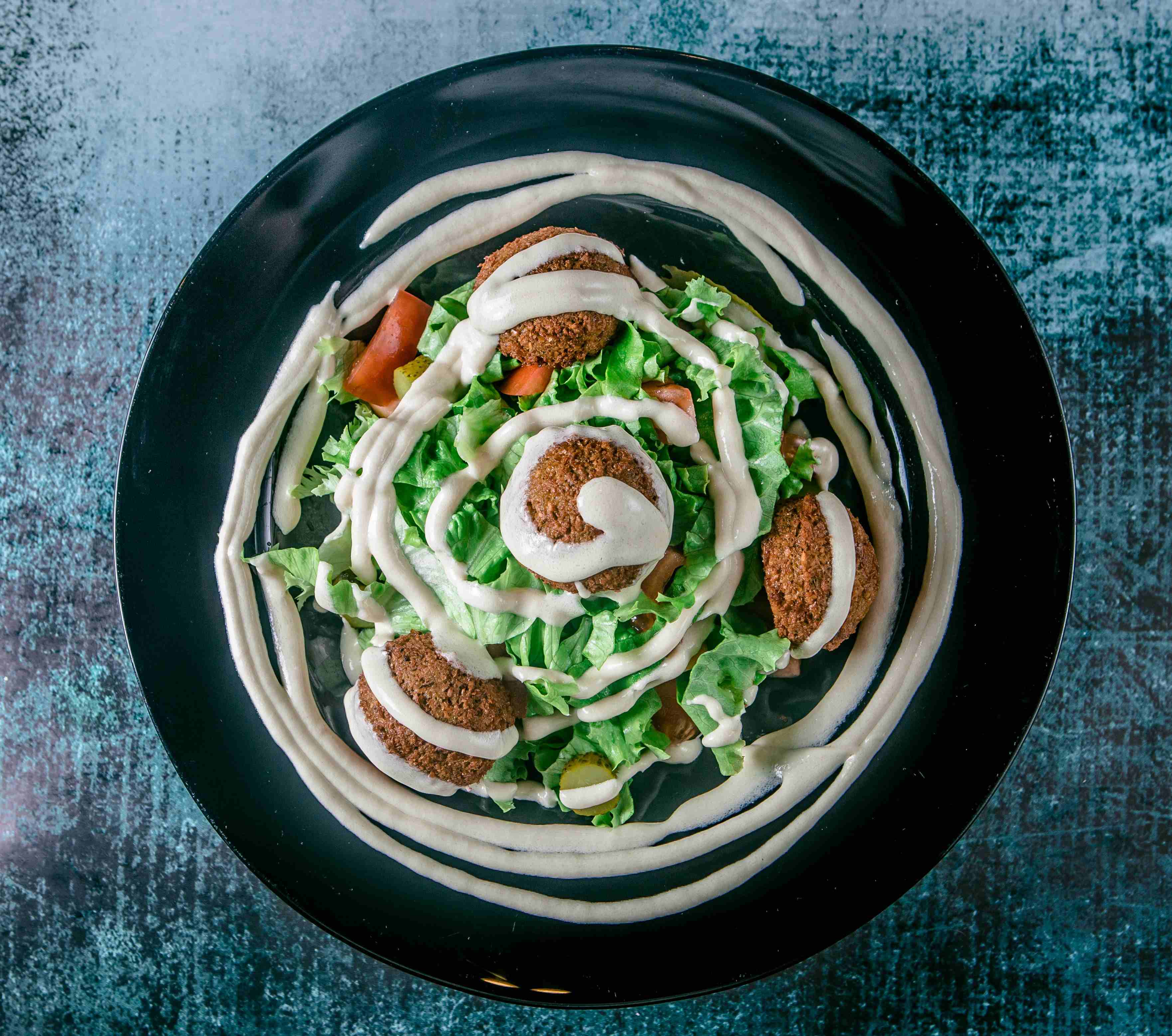 © Layali Lebanese Restaurant
© Layali Lebanese Restaurant
Bernard: It can be tricky to eat out here if you are a Muslim, because so much of the meat here is mixed and it may contain some pork. It's even more difficult if you strictly adhere to religious rules which dictate you can only eat Halal meat. We have a Halal supplier for all of our meat here. There are farms in Croatia and the wider region which provide meats in this way.
Zafer: All of our spices are imported. We tried everything that is on offer here, but nothing is quite the same as back home. All the spices we use are really fresh. We import them from Lebanon or Dubai. We use the fresh parsley from here. In every Arabic home, you'll find a mix of seven spices. It's very important to our cuisine and it can differ from house to house, from region to region. We have different spice mixes for each meat dish we make. We tone down the spices to more suit European tastes but, if someone asks, we make it how we make it back home.
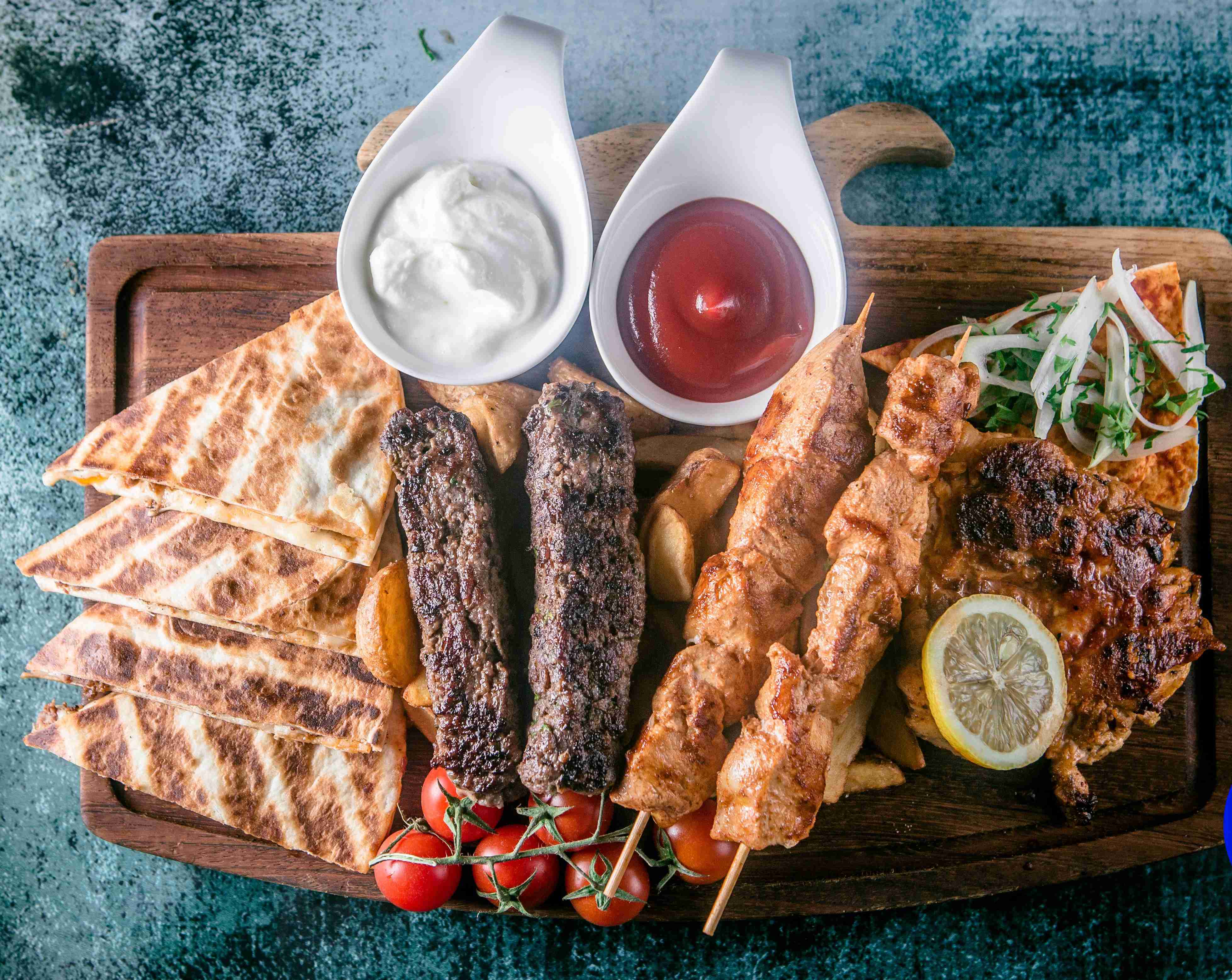 © Layali Lebanese Restaurant
© Layali Lebanese Restaurant
Bernard: In my home, we mostly eat meat. We don't actually eat so many vegetarian main courses. But, when I eat the vegetarian options from Layali, such as falafel, I really don't miss the meat. It really encourages you to eat less meat. I feel lighter - especially when I'm working - if I eat like this. It's perfect for a lunch in this hot, summer weather.
Zafer: If I'm not working, I love to walk. I love the city and I love the weather. I walked all over Zagreb. I don't have a map, I just walk. I love the old buildings and the nature. In Dubai, all the buildings are new. It looks artificial to me. When I'm tired, I stop in some cafe for a drink. Especially I love the rain. When it rains, I walk. If I eat somewhere else, I usually take pizza. It's something we don't make here.
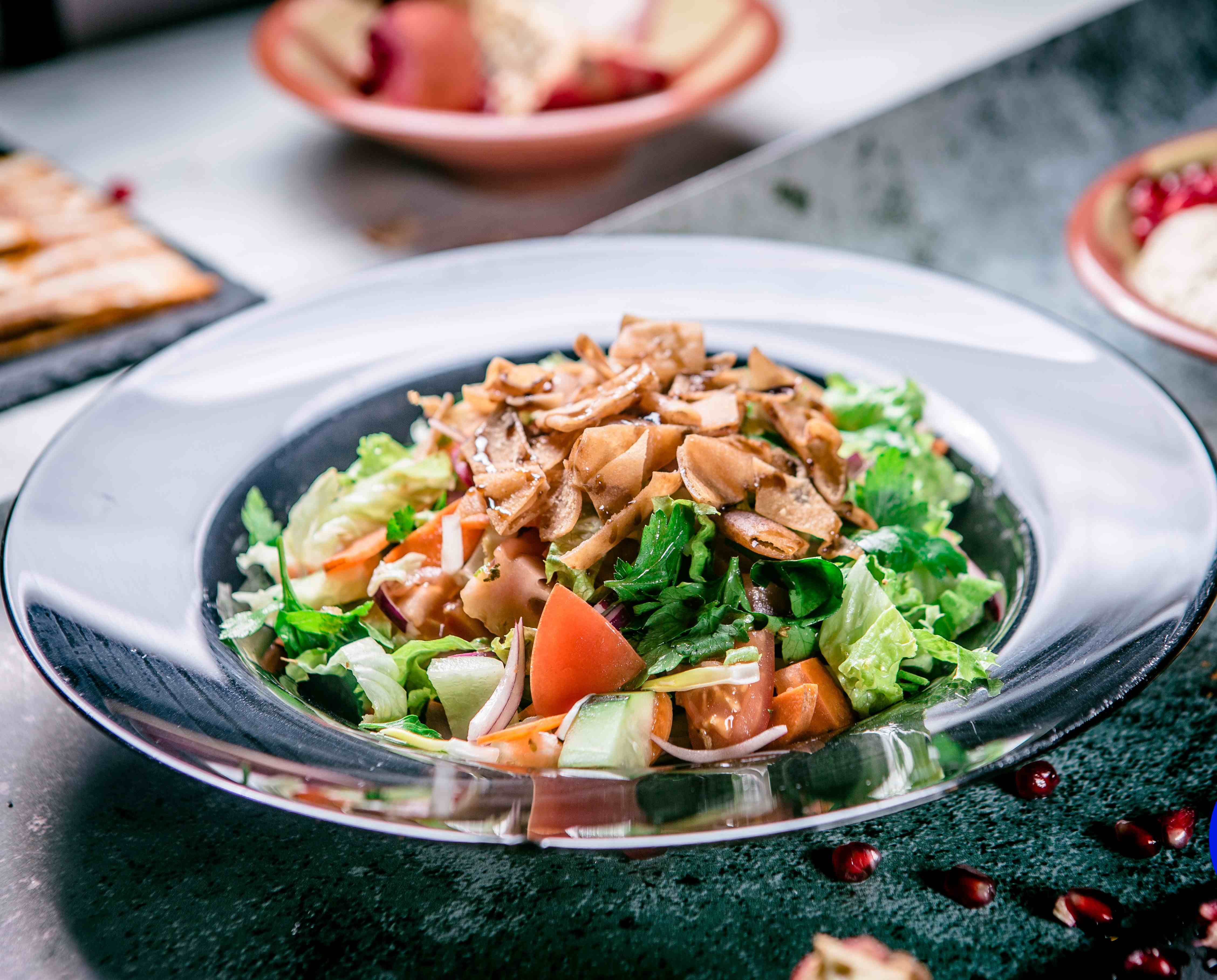 © Layali Lebanese Restaurant
© Layali Lebanese Restaurant
You can find Layali Lebanese Restaurant at Tkalčićeva 59
You can read the introduction to our series on Zagreb international cuisine and the first installment here
To follow our whole series on international cuisine and to follow the Croatian restaurant and gastro scene, keep an eye on our Gourmet pages here
Rešetka's Superior Summer Street Food Brings Fine-Dining Quality at Coastal Pop-ups
July 13, 2020 - In their first venture to the Croatian coast, Rešetka's summer menu brings fine-dining quality to seaside streets in 2020
Sometimes you just want a burger, a sandwich, or something you can just eat from your hands. But, just because you haven't got the time or can't be bothered with the faff of fine dining, that doesn't mean you're volunteering for a drastic drop in quality.
That's where Rešetka comes in. Street food providers renowned for sourcing and selling only quality meats, the grill specialists have been a highlight of Zagreb Burger Fest and several pop-ups in recent times. This summer, the experience that has won over the Croatian capital's burger connoisseurs can be found instead along the coast.
Rešetka owner Nikola Božić has embarked on the summer venture with chef Katarina Vrenc. You'll be able to find their new concept 'Fine Street Food by Reshetka & Katarina Vrenc' at several pop-up locations along the Adriatic this summer. They'll be visiting Istria, Kvarner and Dalmatia, including the islands of Cres and Pag.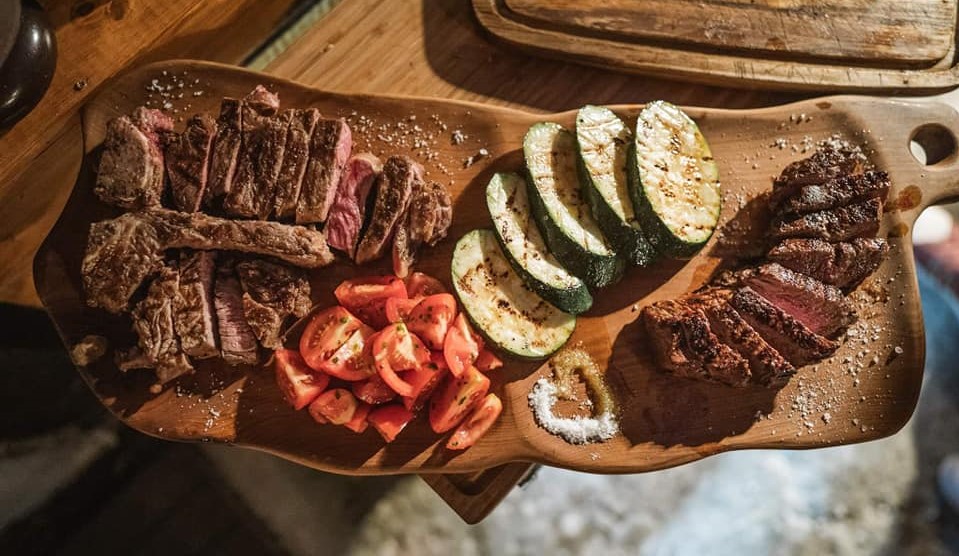
Rešetka and Đurina Hiža are renowned for using only high quality, locally sourced produce within their dishes including, this year, beef from a hybrid of Japan's famed wagyu and Holstein, sourced from the first range herd of its kind in Croatia © Rešetka
With a commitment to cooking only with high quality, locally sourced produce and ingredients, the team is known to use premium meats and seafood for their dishes. This year they will offer beef from a hybrid of Japan's famed wagyu and Holstein, sourced from the first range herd of its kind in Croatia. Within a summer menu that combines the best of continental and coastal Croatian ingredients, you'll also find superior snacks such as rich pork belly paired with octopus.
Nikola Božić is also the proprietor of Đurina Hiža near Varaždinske Toplice. As recently covered in TCN, thanks to some quick and positive thinking, though the restaurant closed for a while in the Coronavirus lockdown, Nikola was able to adapt his business in order to remain successful during the period; relying on high quality, locally sourced ingredients, he became a bridge between the small producers he'd spent time finding, and those shopping online from their homes. Their 'Deda Goes Around the World' service delivered meats and other produce throughout Croatia during the restaurant's temporary closure.
If you're planning to visit Dubrovnik, Biograd, Pula, Premantura or Split this summer and can't face another pizza slice, kebab or burger of questionable origin, be sure to look out for the Rešetka logo. Fine Street Food by Reshetka & Katarina Vrenc will visit Plavica Bar on island Cres on 7 & 8 August and the Michelin-starred Boškinac on Pag in the middle of September. Further inland, they'll also be available at the High Grounds Festival in Varaždinske Toplice on 31 July, 1 & 2 August. Grab yourself a handful of delicious food and pick a spot to watch the stunning Croatian sunset, the Adriatic coast and its breathtaking backdrop has long been lacking exactly this standard of street food to accompany.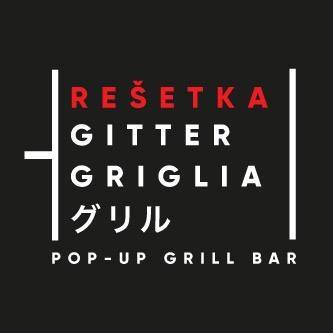
© Rešetka
Gourmet Croatia – How to Brand Croatia as a Gourmet Destination?
The closing conference of the Gourmet Croatia project was held at the Principovac estate near the easternmost Croatian town of Ilok. Neven Ivandić and Neda Telišman Košuta from the Institute of Tourism presented the project and the brochure “Croatia - the New Gastronomic Icon of Europe (Strategy for the Development of Gastronomy, Gourmet and Gastronomic Tourism of Croatia with the Action Plan 2019-2022)”. The overall objectives of the project are to link the food processing sector and the tourism sector through the establishment of local production systems, as well as the territorial branding of Croatia as a recognisable gourmet destination.
After a public tender, the project was entrusted to the WYG Consulting, the Institute of Development and International Relations (IRMO) and the Institute of Tourism (IT), in cooperation with the chef Rudi Štefan. The project brochure explains that the growth of interest in food and beverages reflects profound social changes driven by the improvements in education and prosperity, technology and growing environmental pollution, while the key trends for the development of global gastronomy are experience buying, sustainability, healthy food, multiculturalism, return to tradition, good-quality fast food and growing media influence. That is the framework that supports further development of gastronomy and gastronomic tourism in the direction of creativity, authenticity and sustainability.

Gourmet refers to the highest-quality segment of gastronomy. Although gourmet restaurants represent less than 0.5% of the total gastronomic offer, they have a disproportionately large influence on gastronomy trends. The characteristics of gourmet cuisine are excellence in ingredients and the preparation and presentation of food, and in particular creativity and specific "trademark" of the chef as a person not only knowledgeable in food preparation but deeply dedicated to the "philosophy" of the cuisine he or she offers. The core of the gastronomic tourism is the eating experience itself that must reflect authentic cuisine, the knowledge of learning about local gastronomy and its protagonists, and ultimately the emotional experience of socialising.
The panel discussion "Value Chains for Gastronomy" was attended by Assistant Agriculture Minister Krunoslav Karalić, Jakša Puljiz from IRMO, Nives Kljajić as a representative of the distributor Portus Croatia, Dimitrije Sinović from the Sin Ravnice company as a representative of the producers, and Tomica Đukić, the chef of the Osijek Hotel restaurant. The discussion was moderated by Ivana Jurić, director of the Osijek-Baranja County Tourist Board.

Rudolf Štefan, the chef of the Pelegrini restaurant, spoke about the development of education in the gourmet area. "There are about sixty catering schools in Croatia, huge resources are being spent, but unfortunately not all of these schools produce good staff. We need one high-quality institution that will create the foundations for high-quality gastronomic future of Croatia.”
The second panel discussion "Promotion of Croatian Gastronomy" included Darija Tödling as a representative of the Croatian National Tourist Board, Rujana Bušić Srpak, director of the Vukovar-Srijem County Tourism Board, and Lucija Bilandžić as a representative of the Academy of Gastronomy. It was moderated by Snježana Boranić Živoder from the Institute of Tourism.

The tourism manager of Iločki Podrumi, Vesna Steiner, discussed the promotion of a destination through wine tourism, and the conference concluded with wine tasting – presentation of the Iločki Podrumi wines.
More news about Croatian gastronomy can be found in the Lifestyle section.


